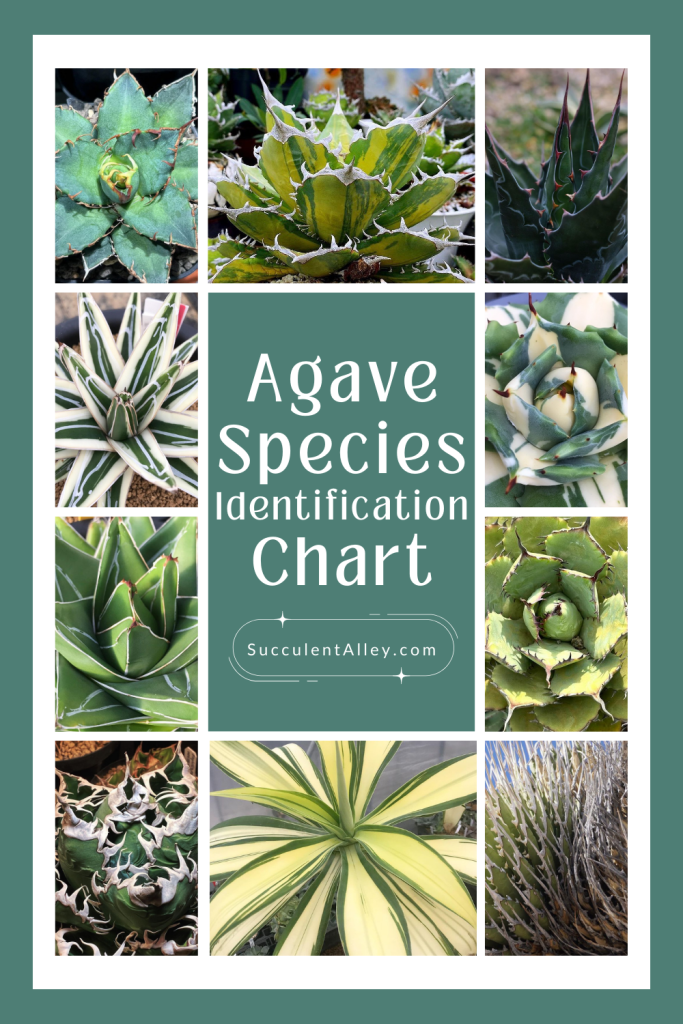80+ Types of Agave Plants With Pictures and Names
The Agave is a genus of plants consisting of succulent species found in hot and dry as well as certain tropical climates in the Americas.
These plants tend to have long leaves with spiked edges. To grow this plant, you can find out more through this Agave care and propagation guide.
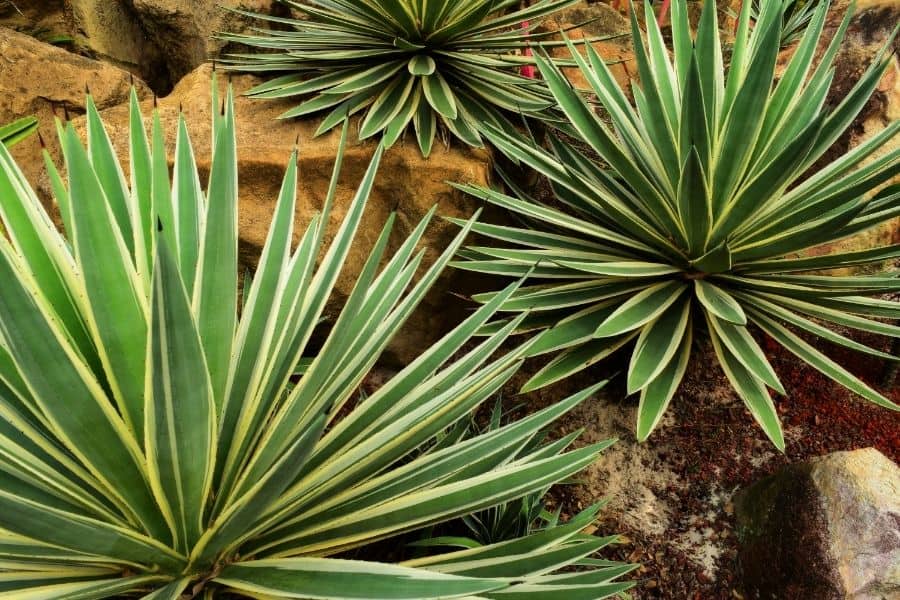
Contents
Types of Agave Plants With Pictures and Names
If you are wondering what kind of succulent you have, this article will help you identify 80+ types of Agave, both the common and the rare breeds.
Related Post:
1,000 Types of Succulents With Pictures
Agave albopilosa
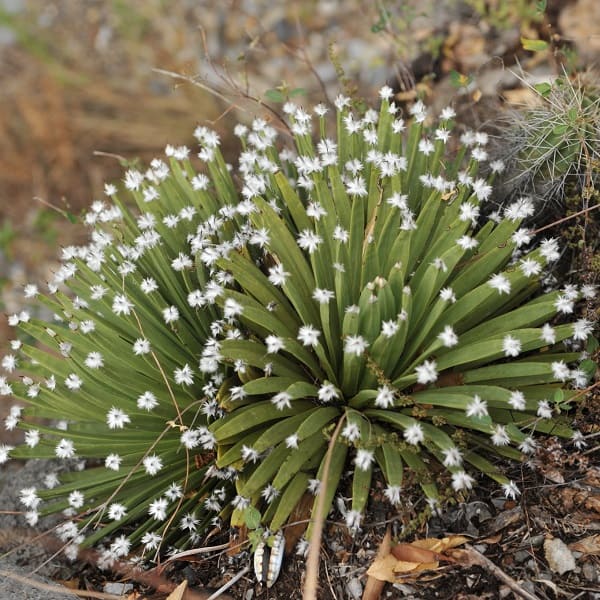
The white hair agave (Agave albopilosa) is an extra-small species forming solitary or clustered balls of numerous, narrow leaves. It is unique in the genus and distinguished by the very peculiar full ring of white hairlike fibers just underneath the terminal spine.
From a distance, it looks like cotton balls on the end of each leaf, however, the new leaves do not carry hair, but the thorny area around the terminal spine looks a bit like the tip of a triangular wooden pencil that opens like a mesemb capsule to reveal the snow-white fibers. It is very slow-growing and will grow to around 30 cm in diameter.
Agave americana
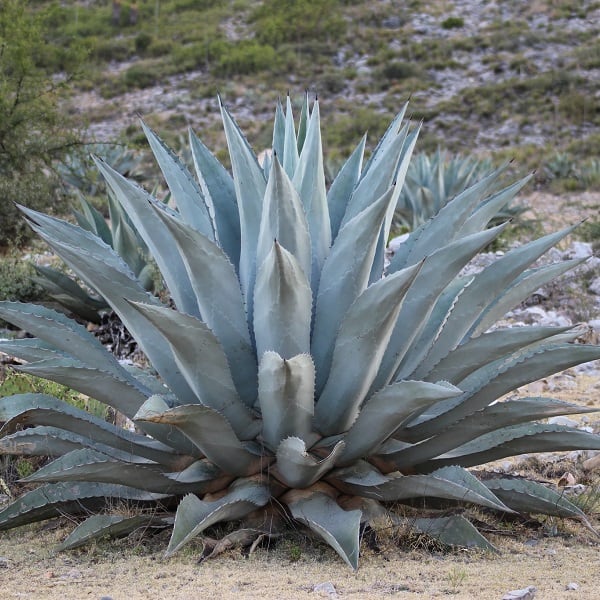
Agave americana, the century plant, is a medium to large, solitary, or freely suckering and sometimes seeding agave with a basal rosette up to 3m wide. Agave americana is the best-known species. The leaves are often reflexed above the middle, and this is a characteristic feature of the species. It is a very polymorphic species cultivated worldwide in many variants, esp. in winter-rainfall climates. It grows well in the open field and in the greenhouse (read here on how to use a greenhouse for beginners)
Agave angustifolia
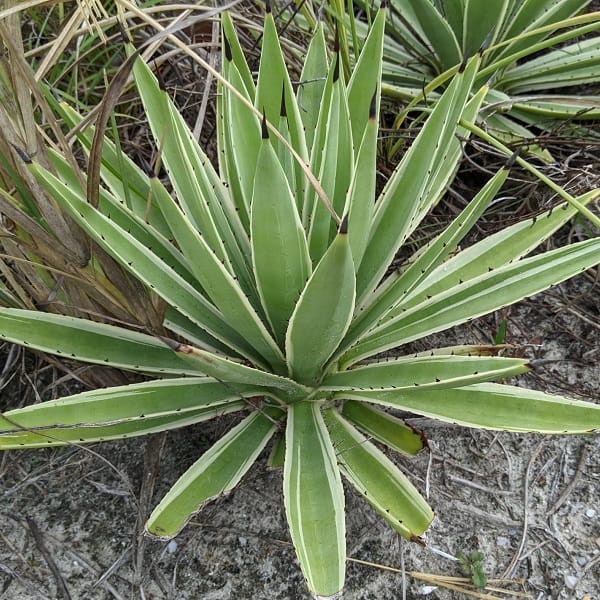
Agave angustifolia is a narrow-leaved agave with yellow to green flowers. It is by far one of the most wide-ranging species of the family and exhibits an extensive range of variation from which many cultivated varieties have been derived.
Stems may be very short or up to 20 – 60 (-90) cm long. Leaves may be few or many, variable in color from green to yellowish-green to nearly white glaucous grey or bluish. Generally, they are narrow sword-shaped leaves, but atypical broadened forms are also reported. Teeth are small and up-curved, but quite variable in size and spacing. Terminal spines may be long and thin or very short and broad, decurrent or non-decurrent. Flowers vary in size too.
Agave applanata
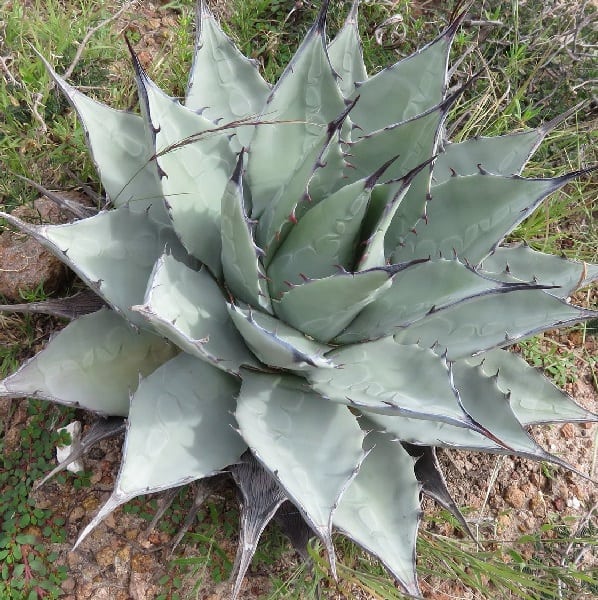
Agave applanata is a medium-sized species usually solitary or making a few offsets of very stiff pale blue leaves with contrasting dark spines.
Agave asperrima
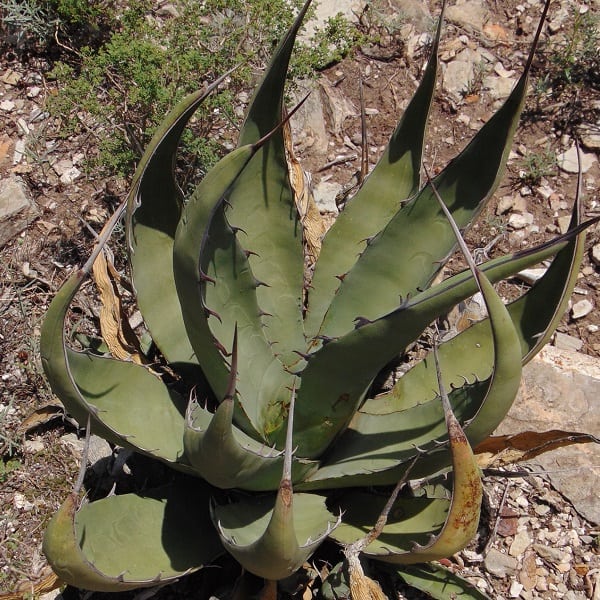
Agave asperrima (also known as Agave scabra) is a medium to large species and one of the plants that the traveler first notices in the desert of Zacatecas. It is similar to Agave americana but it is superior to the common century plant for garden use by virtue of its more rigid and stylized form.
Agave attenuata
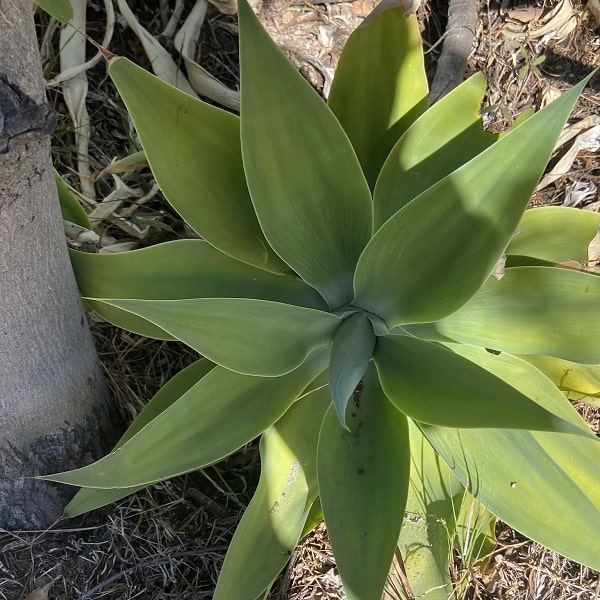
Agave attenuata (also known as the Fox Tail Agave) produces smooth curving trunks, often branched, and eventually, old leaves fall off, leaving them naked and visible. If planted in the ground it will likely form a clump of 90 to 120 cm or taller by even wider with many rosettes of leaves (unusual among agaves). This plant has no spines, unlike its prickly cousin.
Agave avellanidens
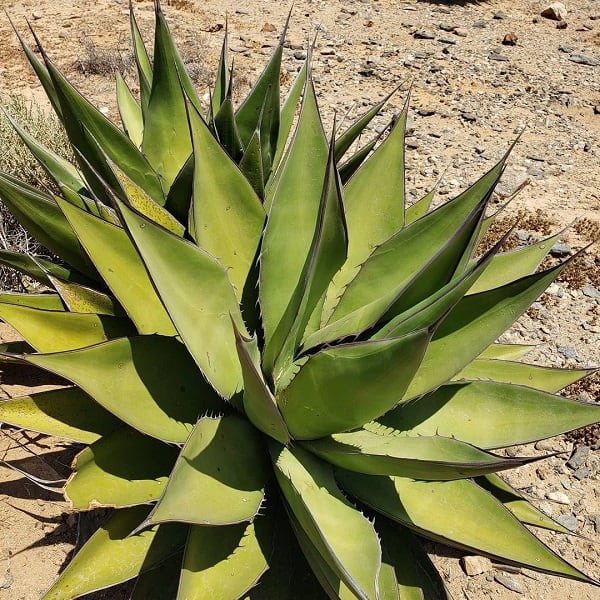
Agave avellanidens is a medium-sized agave similar to Agave shawii var. goldmaniana. These two species meet and mingle southeast of Punta Prieta and are hardly distinguished from each other in their vegetative state.
Agave Blue Ember
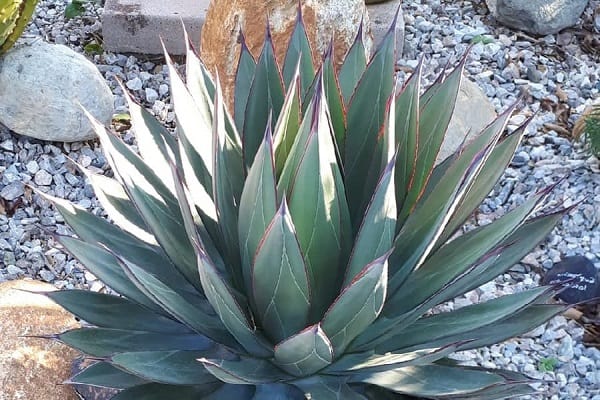
A mid-size succulent, Agave Blue Ember comes from tissue culture. It has dark blue-green leaves that have smooth red edges and red terminal spines. It produces lovely prints on the backs of its leaves making it an even more attractive plant. It is a great plant for the xeric garden, as it thrives in hot, dry climates.
Agave Blue Emperor
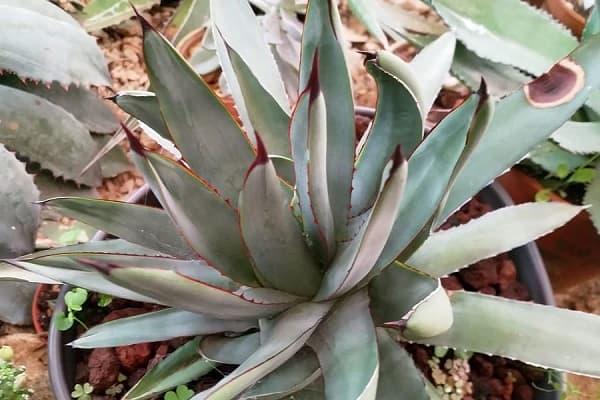
Agave Blue Emperor is a beautiful, silver-blue plant that tolerates light frosts and hot sun. It has soft, bluish leaves with red-orange margins and teeth and has short, black terminal spines that grow out of the tip of each leaf. It grows long, thin leaves and can reach 3 feet tall and 2 feet wide at maturity. This agave cultivar is bred from tissue culture.
Agave boldinghiana
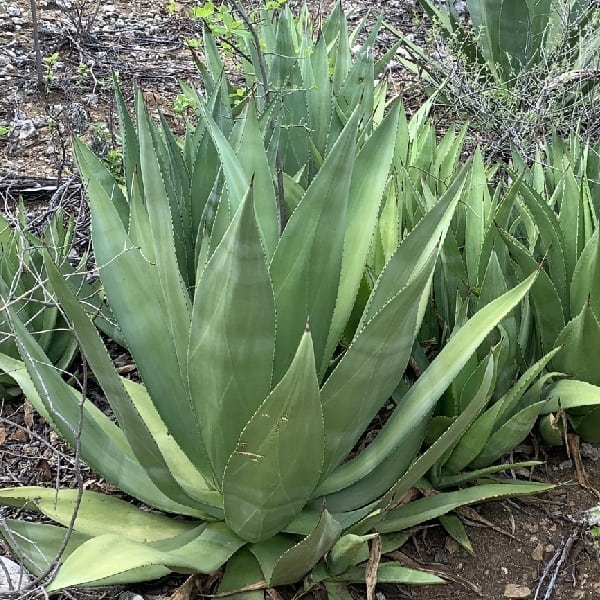
Agave boldinghiana is a very attractive, nearly stemless, medium-sized agave-forming rosette with dark red spines on the leaves even from a very young age. It offsets freely and forms crowded mounds. This is a member of the section Viviparae and like other members of that group produces plantlets, also technically known as bulbils, in the inflorescence.
Agave bovicornuta
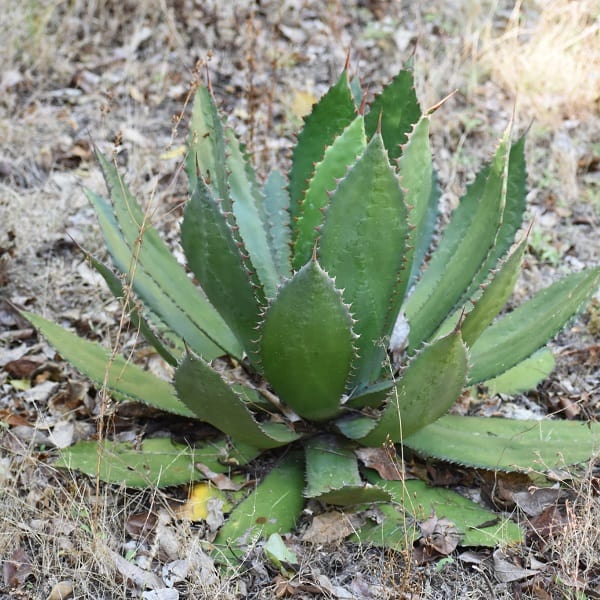
Agave bovicornuta (also known as the Cow Horn Agave) is a perennial medium-sized, non-suckering plant with a short stem, forming a solitary light green, open, rosette that usually grows wider than it gets tall, maxing out at about up to 80-100 cm in height and 1.5-2 m wide, but frequently smaller.
It is quickly recognized by its large size and bright green, decorative, broadly lanceolate or spatulate leaves, that are 45-60 cm long and 10-15 cm wide. The most sought-after forms have very broadly spoon-shaped leaves with deliciously wicked teeth. Yellowish-green flowers are borne on a stalk up to 5-6 m tall after the plant overcome the age of 10-12 years.
Agave bracteosa
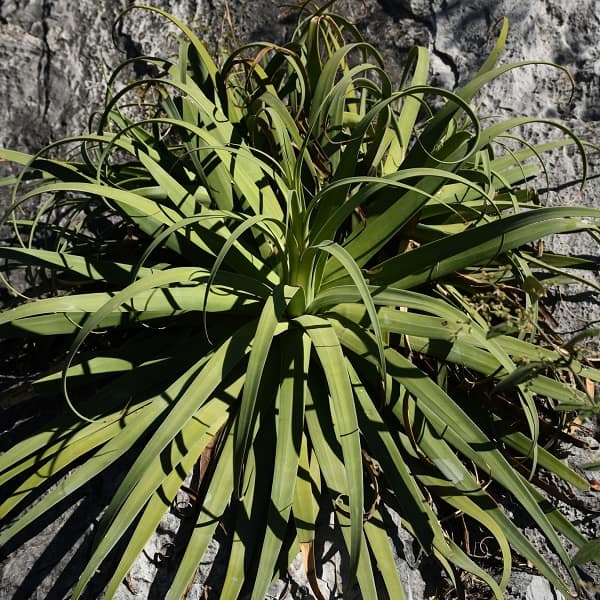
Agave bracteosa, also known as “spider agave” or “squid agave”, is a solitary or clumping rosette. Small among the agaves, its green succulent leaves are long and lanceolate, 50-70 cm long and 3-5 cm at the base, where they are the widest. It forms clusters to 1.2 m across. Variegated forms occur.
Agave cerulata
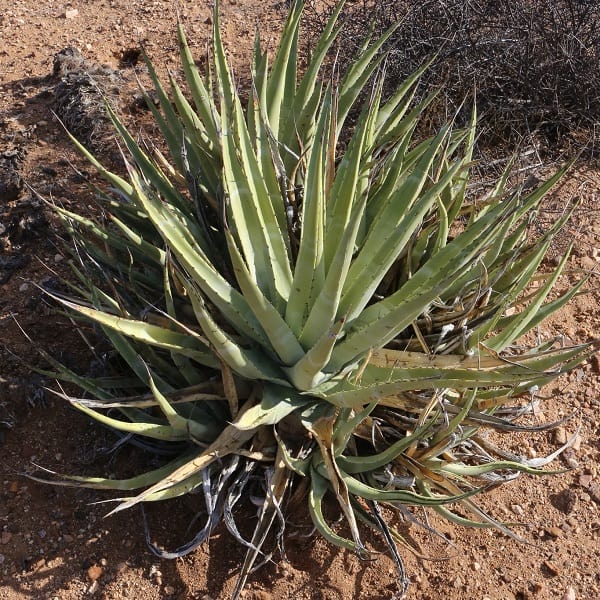
Agave cerulata is a small to medium abundantly surculose agave. Its leaves are yellowish, 25-40 cm long and 4-8 cm wide.
Agave chazaroi
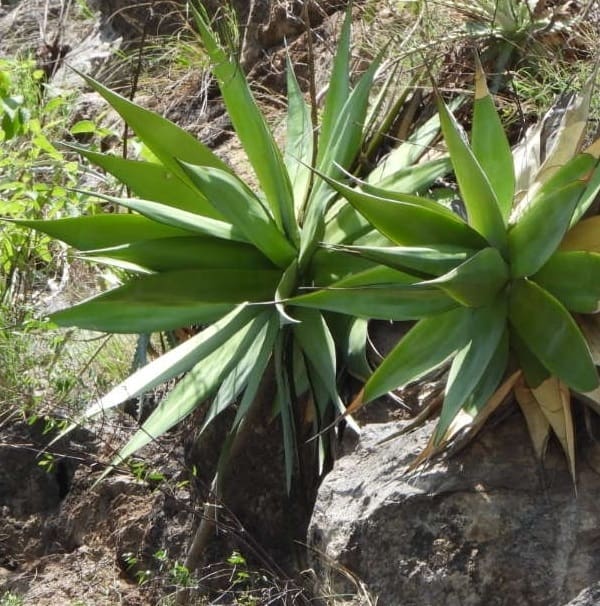
Agave chazaroi is a beautiful species with wide, very stiff, deep-green to bluish-grey leaves with red-brownish unarmed rims. At maturity is produced a tall unbranched spike of flowers.
Agave chiapensis
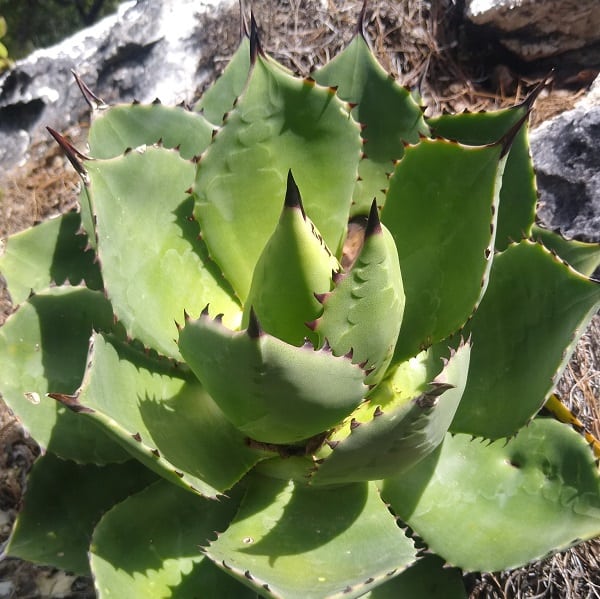
Agave chiapensis is a medium-sized, robust, agave with beautiful broad leaves. It is closely related to Agave warelliana, which differs in its closely serrated marginal teeth on a red margin and is superficially similar in appearance to Agave celsii, but the leaves tend to be broader and stouter. It is one of the greener agaves.
Agave colorata
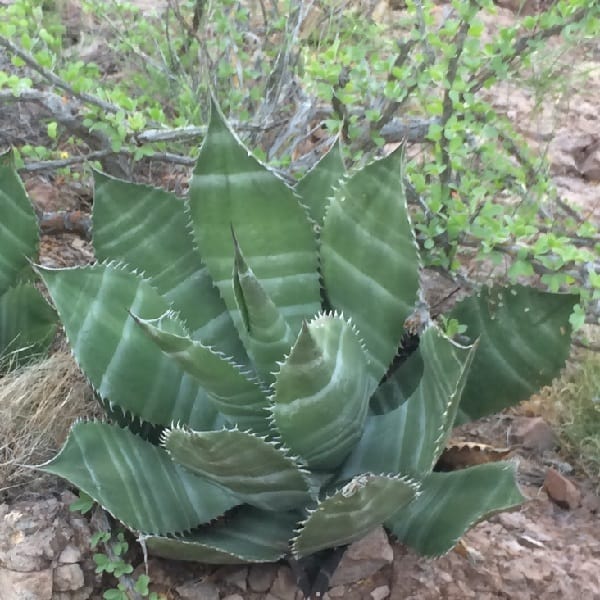
Agave colorata is an attractive wide-leafed agave with succulent rosettes 60 to 120 cm in diameter with jagged spines on the leaf margins. This plant is usually solitary and does not often send up many plants around the main rosette, but sometimes It may slowly clump and mature plants develop a short stem (larger group can grow up to 1.2-1.8 tall and m 2-3 m in diameter).
It is similar in size and armament to its bovine cousin (Agave bovicornuta), but the blue-grey leaves are wider, with stunning leaf imprints. Leaf imprints develop during the formation of the bud.
Agave Creme Brule
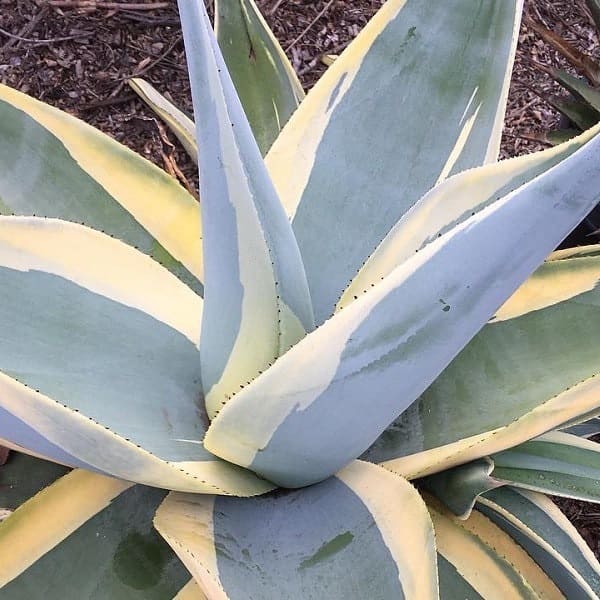
Agave Creme Brulee (Agave guiengola) is native to Mexico and usually tends to grow rapidly, achieving a height of around 22 inches with a diameter of 12-16 inches.
The leaves grow in a bunch and are usually quite thick with grey-green or blue colors. The flowers themselves are yellow and white in color, blooming near the base of the plant. The flowers also bear fruit that appears in the form of brown pods.
This plant grows from spring to fall while the flowers bloom from spring to summer.
Agave datylio
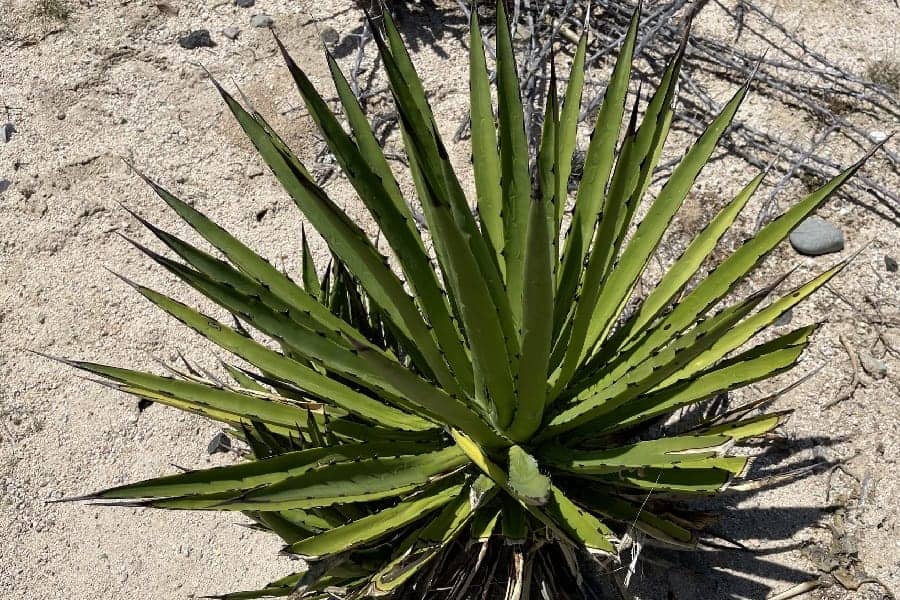
Agave datylio commonly tends to grow in Baja California Sur in Mexico. The leaves are dark green and long with teeth on their edges.
The leaves also have a darker and sharper spine at the tip. As the plant begins to mature, the leaves also gradually change color from green to yellowish-brown.
Agave decipiens
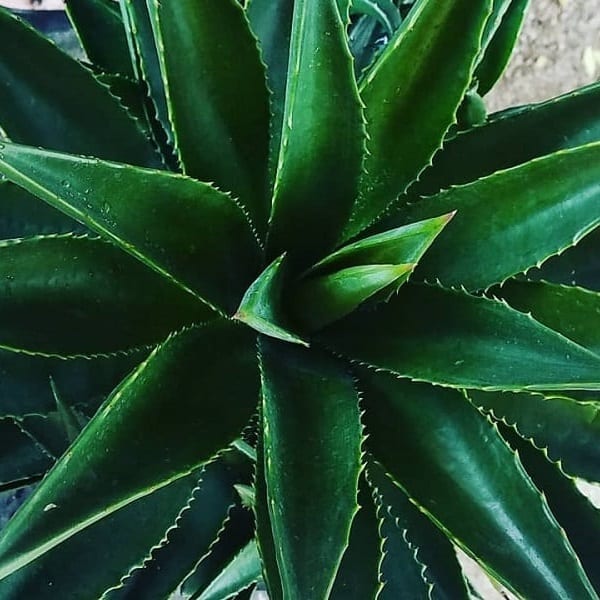
Agave decipiens is more commonly known as the False Sisal or Florida agave. This plant mainly originates from Florida but is also naturally found in South Africa, India and Pakistan.
This plant tends to grow in damp regions such as marshes and takes up a tree-like appearance. It has a tall trunk that can grow up to 4 meters in height with leaves growing up to 40 inches. The leaves are usually green in color with tapering ends and spikes or teeth along the edges.
Agave deserti
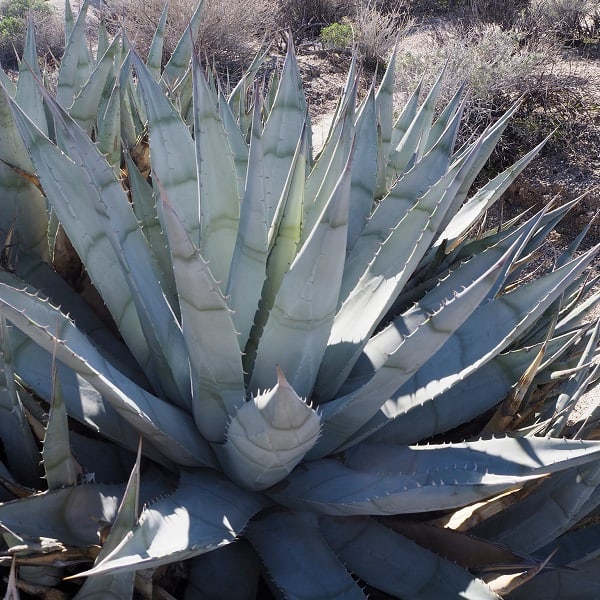
Agave deserti is a small to medium-sized gray-green species. Most varieties sucker near the base to form dense colonies, but some offset by long underground rhizomes, and few other forms rarely offset at all. In Baja California, this species can be confused with the straight-leaved varieties of Agave cerulata.
Agave desmettiana
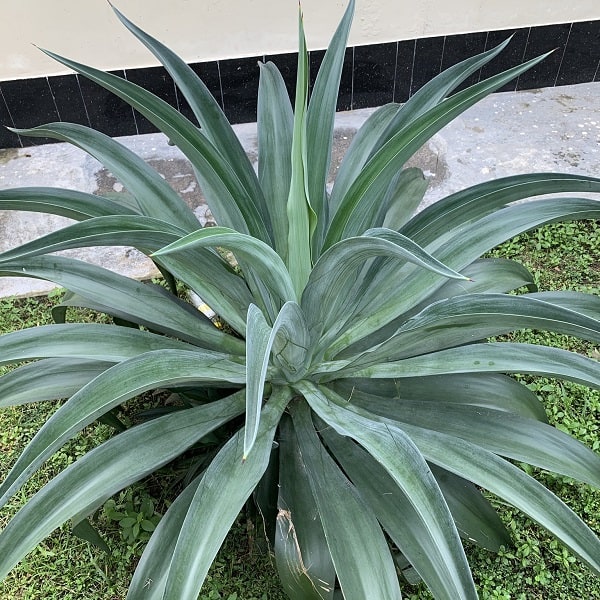
Agave desmettiana is a suckering succulent that forms an upright urn-shaped rosette up to 60 cm tall by 90 cm wide. It is quick-growing and often produces many offsets.
Varieties of Agave desmettiana:
Agave desmettiana Variegata
Agave difformis
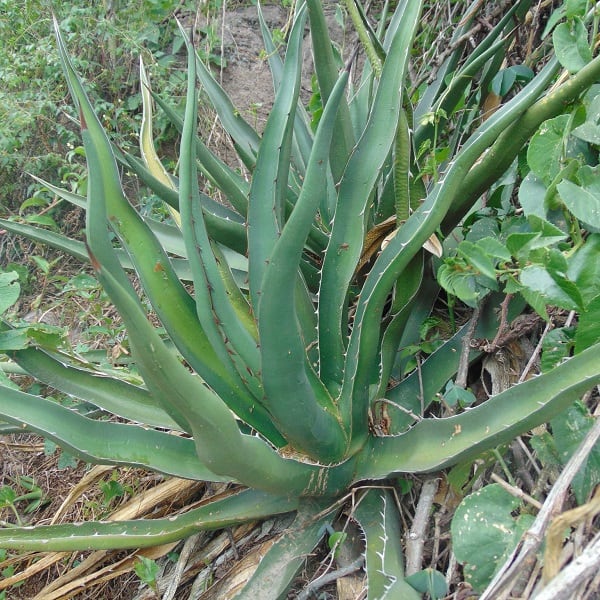
Agave difformis is a rather vigorous, but variable suckering species. The rosettes of this type of agave plants are succulent, open-spaced, subacaulescent 45 to 150 cm in diameter and tall.
Agave durangensis
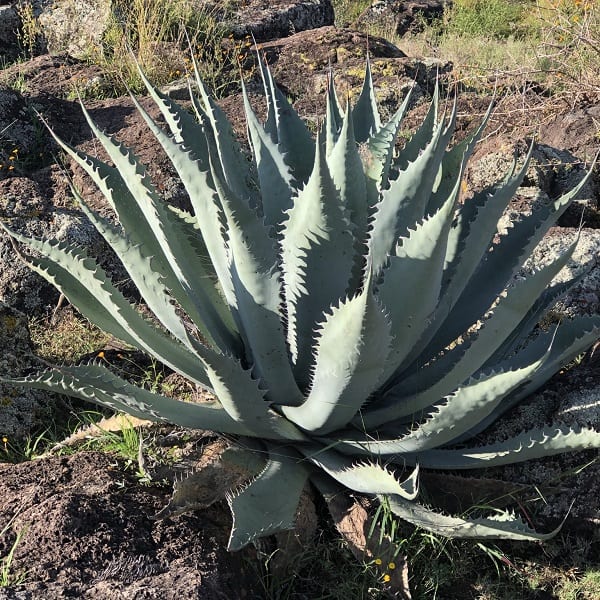
Agave ellemeetiana
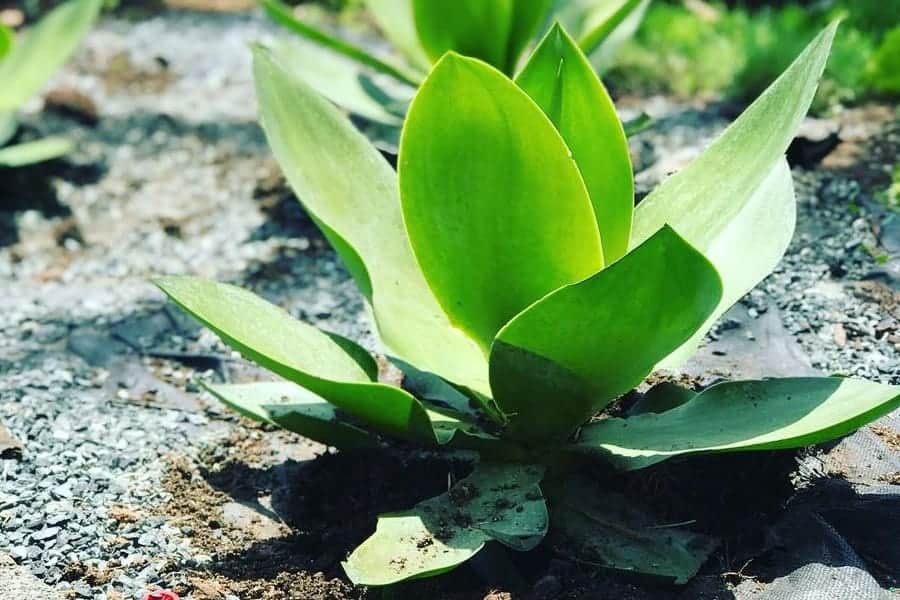
Agave ellemeetiana is an evergreen succulent that originates from Mexico. It can grow as tall as 24 inches in height and is characterized by its long, broad and waxy leaves that grow in a cluster, forming a rosette.
These plants are stemless and do not have a supporting spine. The leaves are light to dark green in color and tend to have sharp edges.
Agave filifera
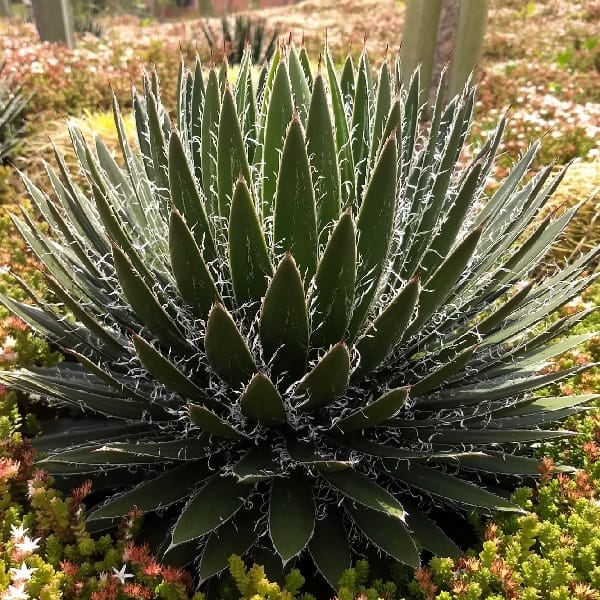
Agave filifera is a small to medium-sized agave that forms an attractive rosette of leathery leaves each ending in a stout stiff spine. The leaves are dark green in color with ornamental white threads along the edge.
This agave will eventually throw up a flower stem of 2.5 m at the end of which are purple and green blooms. However, the plant is mainly grown for the attractive rosette of leaves. The main rosette dies after blooming but usually, new plantlets sprout from the base to start a new life cycle. It produces suckers freely.
Agave flexispina
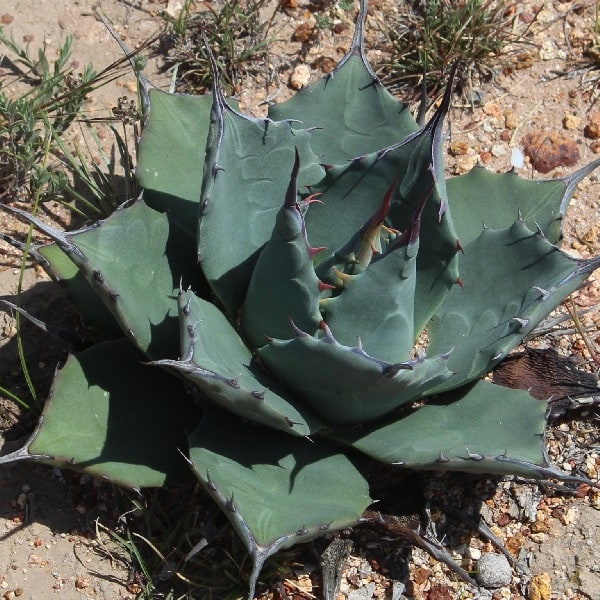
Agave flexispina is an attractive, symmetrical, small-sized agave, single but will offset occasionally once established. It is a rarely grown agave, related to Agave palmeri and Agave shrevei.
Agave funkiana
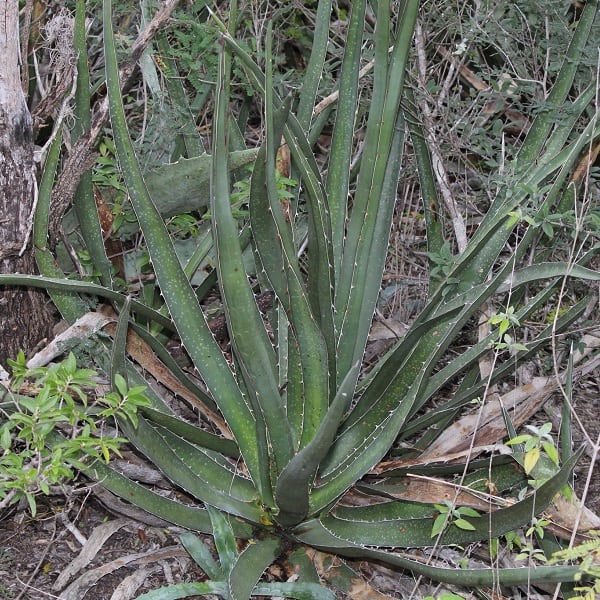
Agave funkiana is a rather vigorous, but variable suckering species. The rosettes are succulent, open-spaced, subacaulescent 45 to 150 cm in diameter and tall.
Agave garciae-mendozae
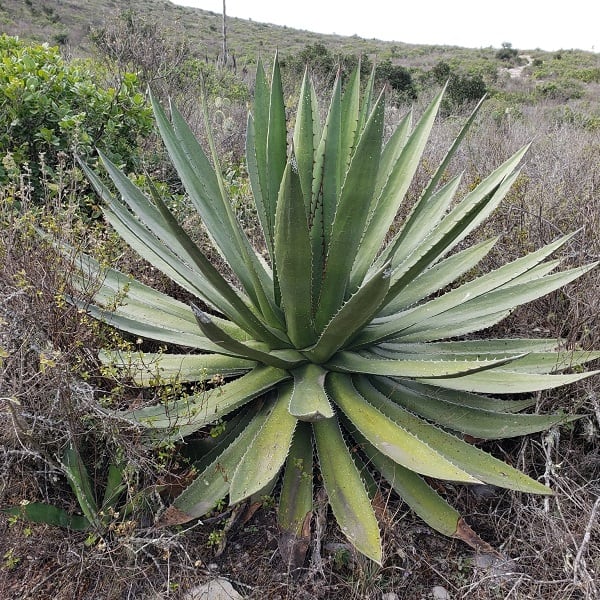
Agave geminiflora
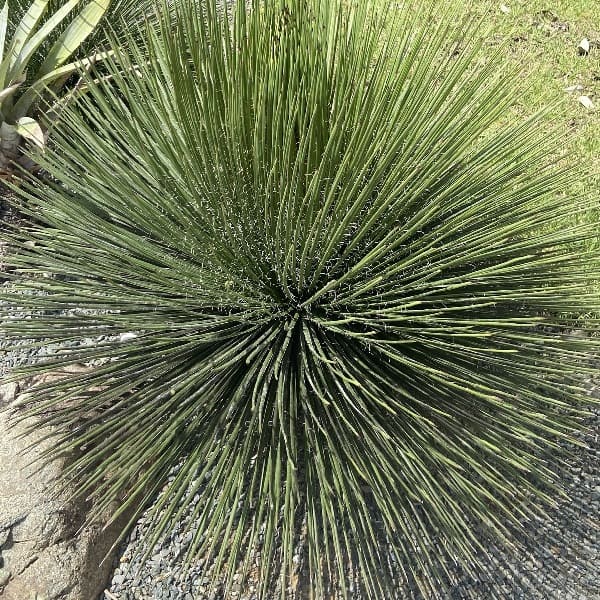
Agave geminiflora (Twin-flowered Agave) is a single, short-stemmed, monocarpic agave with narrow, dark green unarmed leaves that are very flexible. These leaves, which often number 100-200, cascade from the center of the plant forming a very symmetrical, compact, dense rounded solitary rosette to 60-100 cm tall and somewhat broader.
When plants mature they will initiate flowers which are formed in pairs on an unbranched spike that rises 2.5-6 meters. The flowers are 5 or 6 centimeters long. Similar to Agave filifera subsp. multifilifera but Agave geminiflora has more rounded leaves and fewer hairs on the leaf margins. It is most closely related to Agave ornithobroma.
Agave gentryi
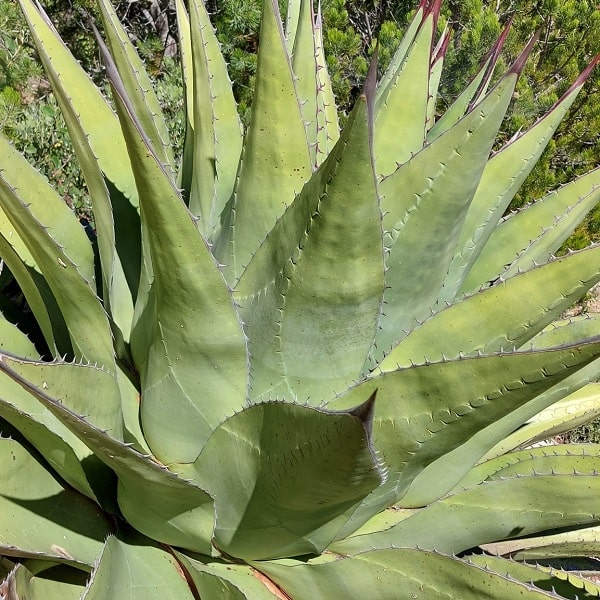
Agave gentryi is a solitary medium-large sized agave fiercely spined along leaf margins and at the tip. It looks very similar to Agave montana and the boundaries of gentryi and montana cross over, both are very hardy and can easily grow outdoors.
Agave ghiesbreghtii
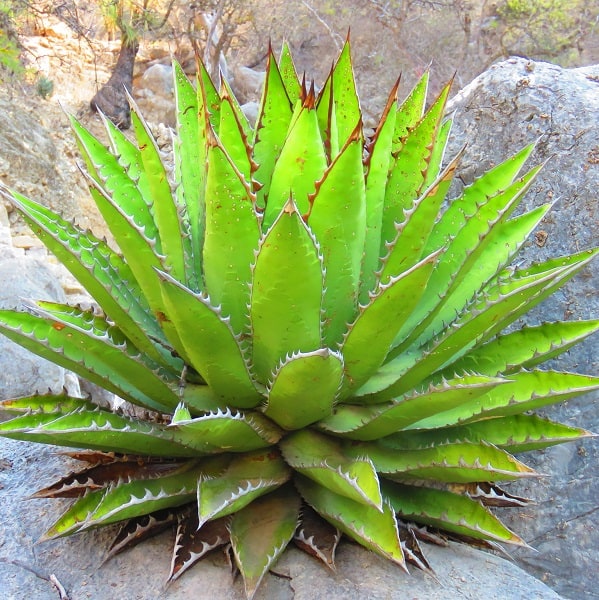
Agave ghiesbreghtii is an extensively offsetting medium-sized agave, with neat succulent rosettes, up to 75 cm in diameter, 50 cm tall. It suckers profusely and in the garden it can become invasive, slowly forming small compact clumps with several offsets on short rhizomes growing close to the mother plant. Often used for hedge and animal barriers.
Agave gigantensis
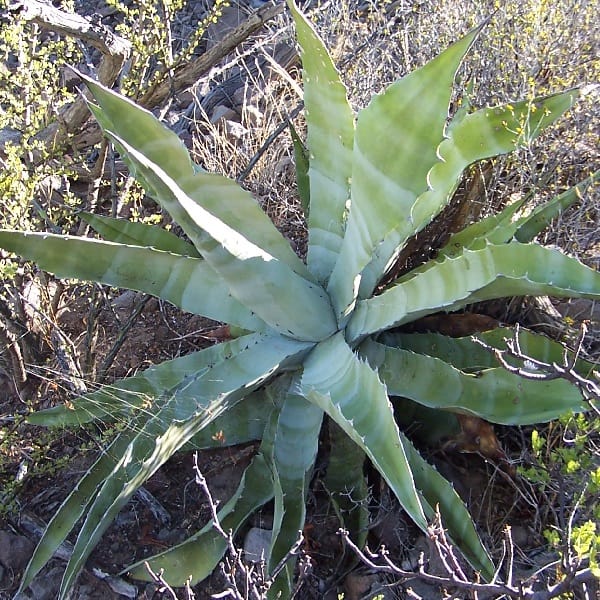
Agave gigantensis is an attractive, symmetrical, medium-sized agave with graceful, broad curving leaves. Plants are not known to produce offsets.
The Agave gigantensis is so named not because of its giant size, but because of the origin of the original specimens: Sierra de la Giganta (Mountain of the Giantess), in Baja California, Mexico. This species is variable with some plants being quite large while others are of more modest size.
Agave x glomeruliflora
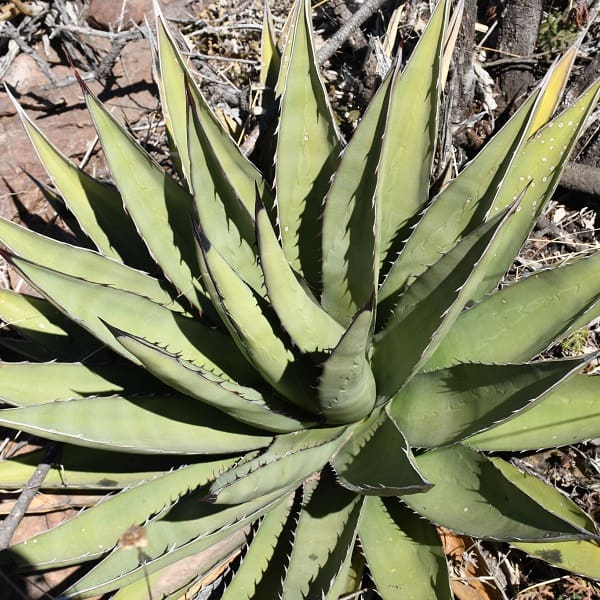
Agave x glomeruliflora is similar to Agave gracilipes but the former species has leaves that are 55 cm long, and the corneous margin is continuous from the base to the terminal spine, while the leaves of Agave gracilipes are less than 30 cm long and the terminal spine extends along the margin only to about the middle of the blade.
Agave guadalajarana
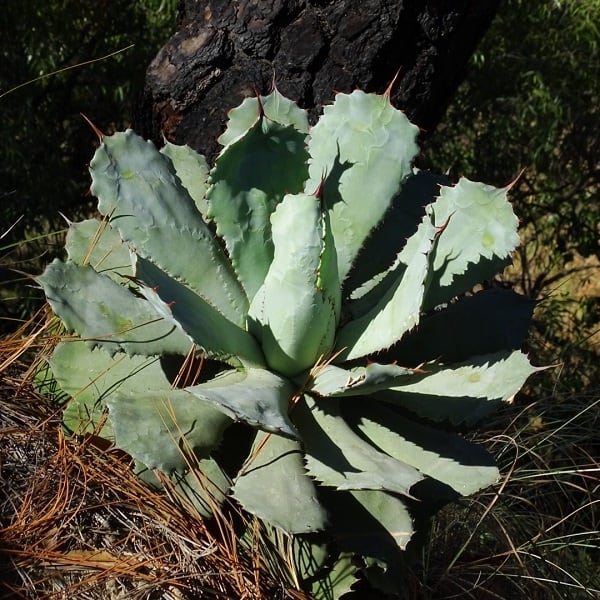
Agave guadalajarana is a usually solitary small tightly formed Agave, but suckers occasionally. It forms compact rosettes 25-50 cm tall by 35-75 cm wide (or more), broader than tall.
It holds a lot of leaves for a larger Agave; these are paddle-shaped, widest above the middle, grey-green with distinctive overlapping marks. The edges of the leaves are conspicuously mammillate toward the apex with big spines and they end each in a thick brown thorn.
The species is often confused with a similar species, Agave inaequidens. It is also similar to Agave colorata, but differences in shape, size and leaf structure can be seen.
Agave guiengola
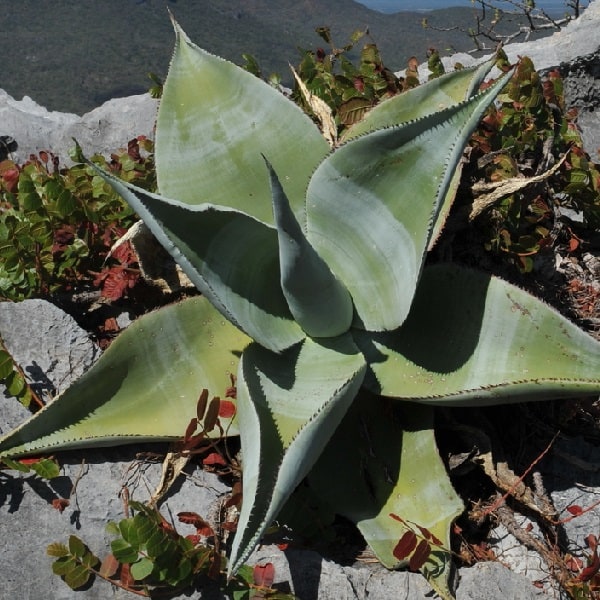
Agave guiengola is a fairly fast-growing agave with few soft succulent leaves. Its uniquely shaped, silvery-bluish leaves make it a very unique statement in the landscape and it is considered by some collectors to be the most spectacular large agave because of its sculptural form.
Plants in habitat are mostly single while the more common cultivated clones sucker profusely.
Agave gypsophila
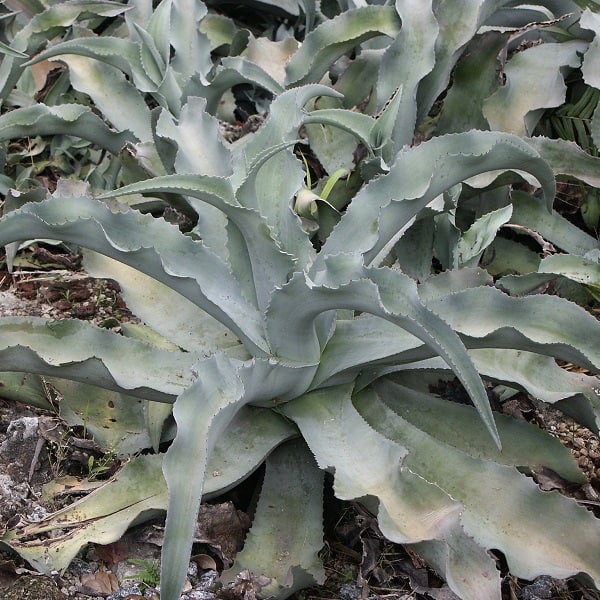
Agave gypsophila, (Agave Blue Wave), is a small sprawling agave, that forms a single loose rosette of soft, fleshy, leaves that can reach a diameter of up to 2m. The leaves are easily distinguished, linear, very brittle, grey with small narrowly-spaced teeth along the wavy margins.
Young emerging pale gray-green leaves clasp together in a tube-like manner before curving out and down and turning wavier and grayer in color, creating an overall fountain-like effect. When the infrequent flowering occurs, the yellow flowers are born on 2-3 m tall panicles.
Agave havardiana
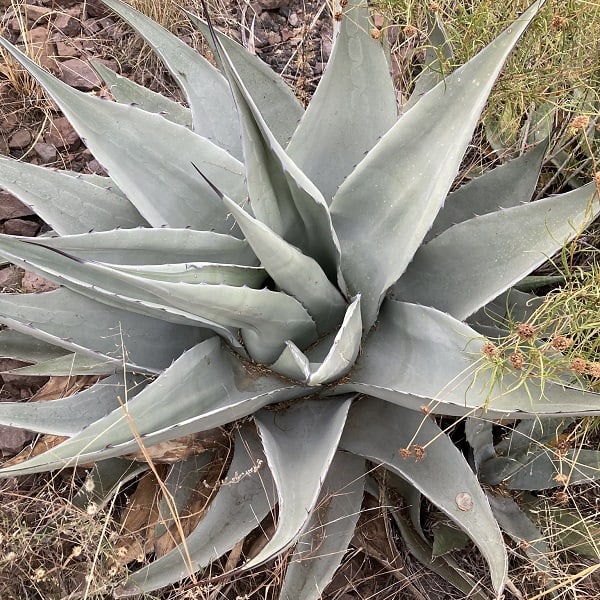
Agave havardiana (Havard’s Century Plant) is an acaulescent midsized species forming rosettes low to the ground, sometimes creating suckers but not forming large colonies like some other species. The short, silver-grey to nearly white triangular leaves of Agave havardiana are up to 60 cm long, about three to four times longer than broad, with teeth along the margins and at the tip.
When the plant matures and blooms the tall candelabra inflorescence rises to over 7 meters bearing yellow to yellow-green flowers that attract birds and bees.
Its leaves are broader and more chalky in color to Agave parryi which it superficially resembles and it is an altogether larger and more imposing plant. It is also faster growing than Agave parryi – and unlike Agave parryi – it usually forms a solitary rosette although on occasion it does produce offsets.
Agave horrida
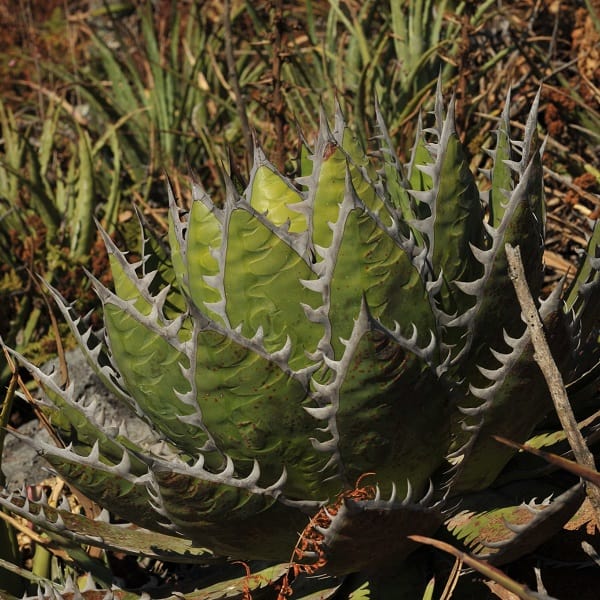
Agave hurteri
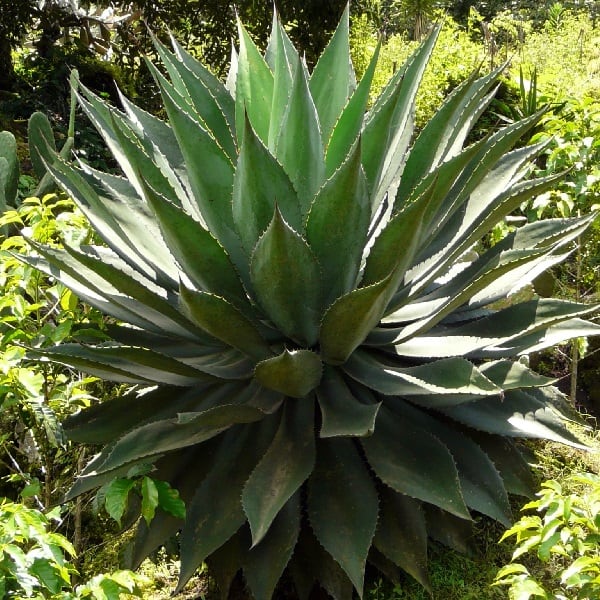
Agave impressa
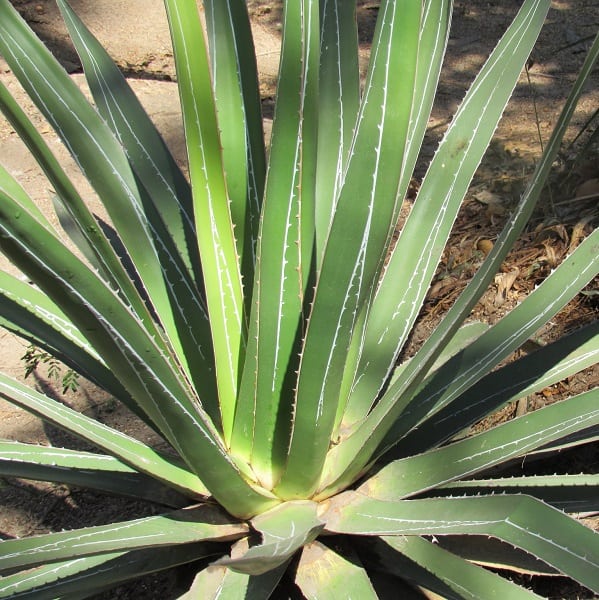
Agave impressa is a distinctive small to medium-sized Agave with no close relatives. The symmetrical rosettes with spreading light green are gracefully marked with distinct pairs of white imprints that converge near the leaf tip. The leaves are proportioned with blunt teeth and spines.
This species is quite unlike any other plant in the genus. The 2 to 3 meters tall flower spike is unbranched with greenish-yellow flowers from tip to near base. It may be related to Agave pedunculifera.
Agave isthmensis
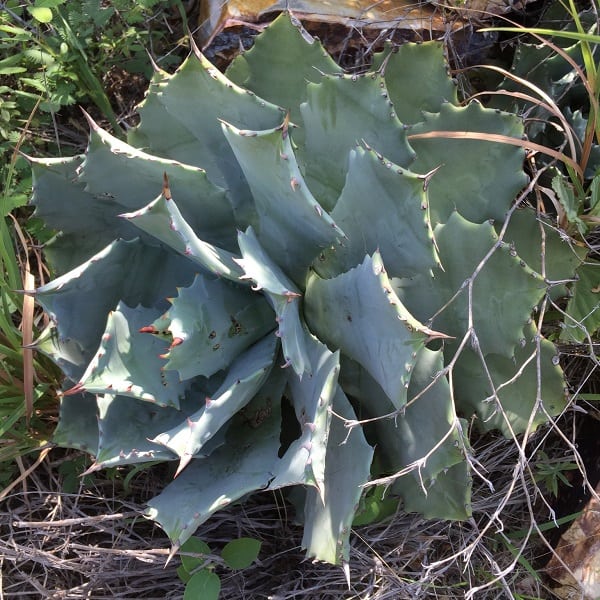
Agave isthmensis (Dwarf Butterfly Agave) is are small but quite variable, offsetting agaves with the individual rosettes less than 30 cm tall by an equal width with 10-13 cm long by 5-7.5 cm wide powder-grey-blue ovate leaves that narrow towards the base and are at their widest near the tip.
The leaves have margins that have shallow rounded lobes with prominent dark reddish-brown teeth and a terminal spine. The best forms have powdery blue leaves, black teeth, and black spines.
This plant is monocarpic but offsets readily, and suckers tend to remain very close by the mother plant. The flower stalk can reach 150-200 cm tall with short side branches bearing yellow flowers.
Agave karwinskii
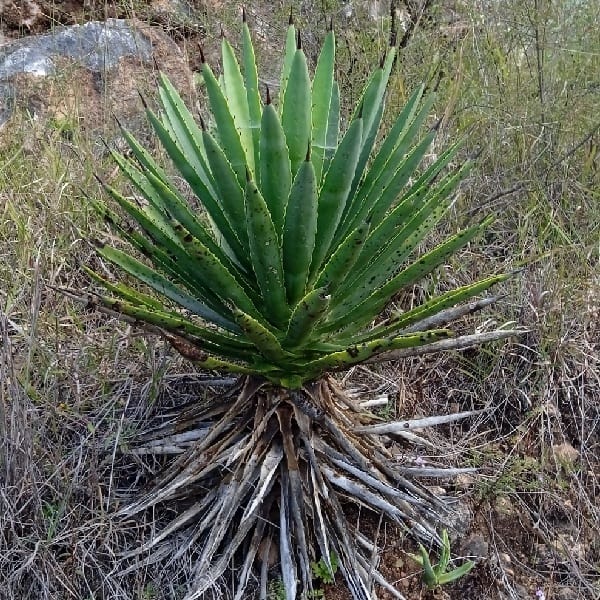
Agave karwinskii is vaguely reminiscent of Yucca aloifolia, it forms slender trunks up to 4 m tall, with crowns of upright leaves.
Agave kerchovei
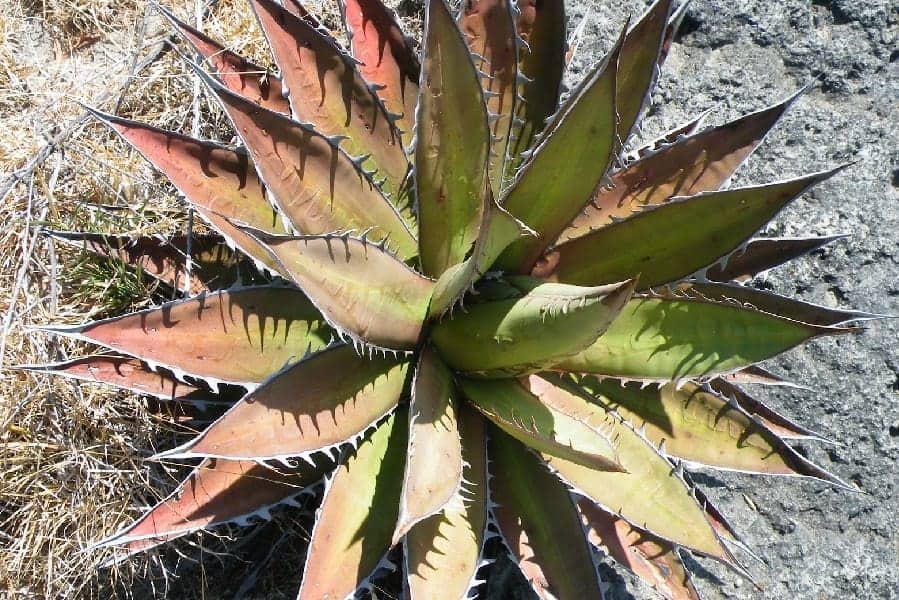
Agave kerchovei is a stemless agave native to Mexico. It grows in rosettes spanning 2 to 5 feet in diameter and can grow up to 5 feet tall. It has dark green leaves that are sometimes covered with a speckled pattern or lighter margins.
Agave lechuguilla
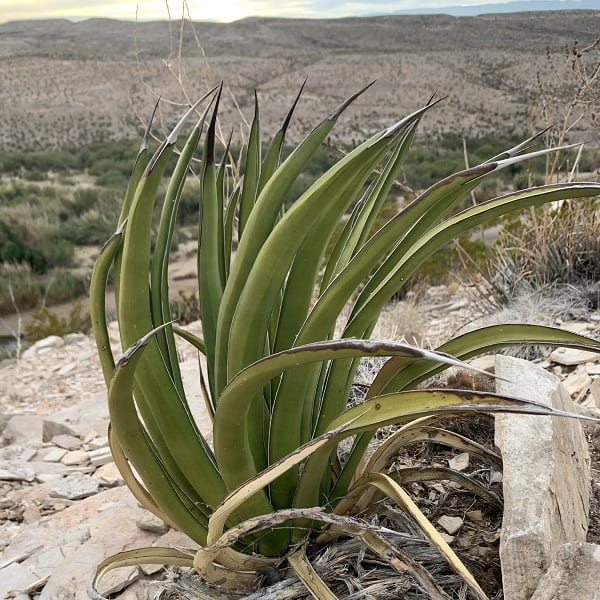
Agave lechuguilla is a small-sized trunk-less agave, composed of basal, widely suckering rosettes, and hardly looks like an agave. The linear leaves are yellow-green, long, tough and rigid, with very sharp, hard marginal teeth that slant down and terminate in a stout sharp spine, which can easily penetrate clothing and even leather.
The plants have yellow or reddish flowers and are easily seeded.
Agave Little Shark
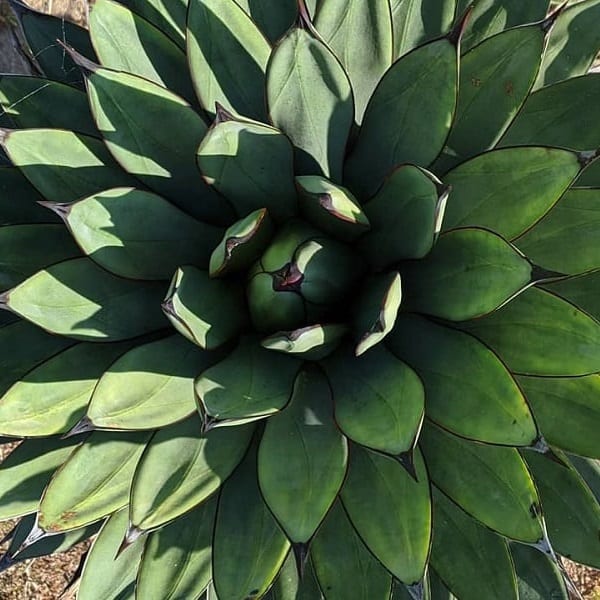
A hybrid between A. macroacantha and A. victoriae-reginae, the Agave Little Shark is a small and slow-growing plant with stunning symmetry. It has compact rosettes of steel blue-green leaves with black margins and tips. The Agave Little Shark is great for rare plant enthusiasts. It looks great in pots or nooks and crannies of rock gardens.
Agave macroacantha
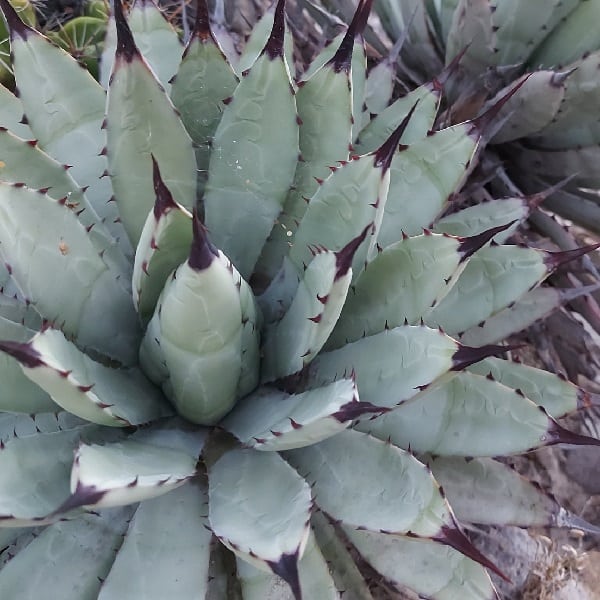
Agave macroacantha is a medium-sized agave that forms dense clumps to 60 cm tall by 1.5 m wide composed of very regular leaf rosettes of a bluish-grey color that can be basal or can grow on a very short stem. Leaves are succulent, narrow sword-shaped blue-grey or greyish green and up to 35 cm long at a maximum, ending in sharp, contrasting, black spines at the tips.
Flowers are small, purple-tinged green with a fuzzy interior, growing in bunches on sturdy stems of up to 3 m in height, though it has been reported that the age of the plant needs to be 15 years or better to flower.
In the wild it is a very variable plant, with some populations having large, jet-black terminal spines, some having red-brown spines, some with small spines, some large. Several atypical variants were also reported, some doubtless due to artificial growth in greenhouses.
Agave mapisaga
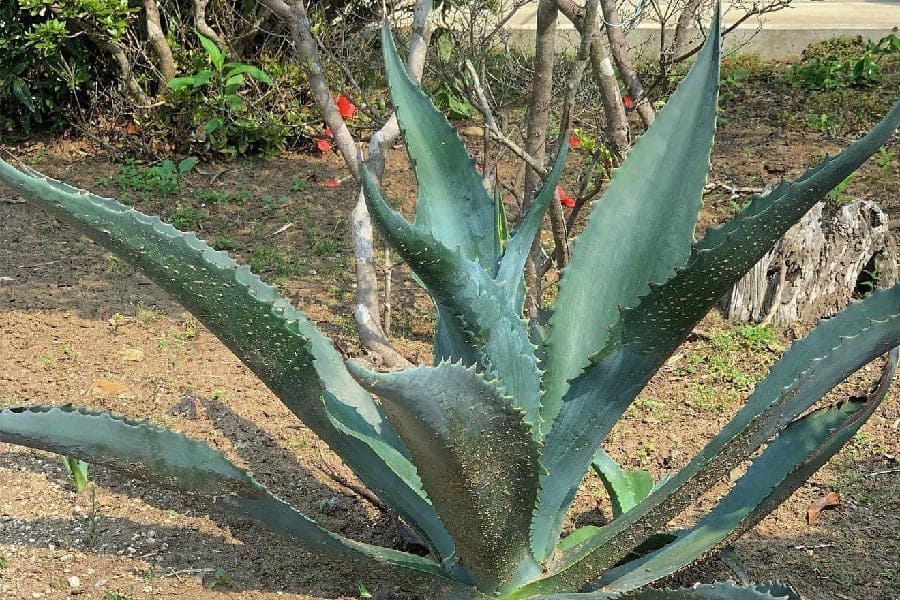
Agave mapisaga is a huge agave that features large and long leaves that are thick and fleshy. Native to Mexico, these agave varieties have gray-green leaves that grow in rosettes and span as many as 8-9 feet in height. To easily identify the different agave types, refer to the agave identification chart below. They are also around an entire foot wide.
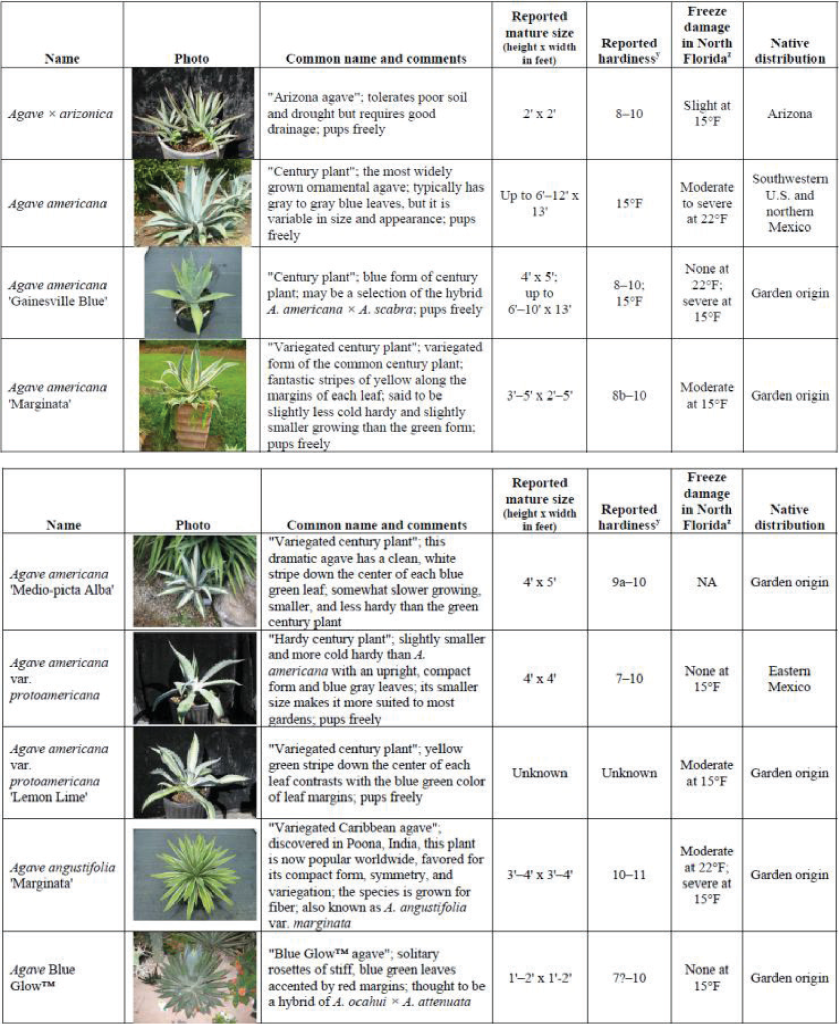
Agave marmorata
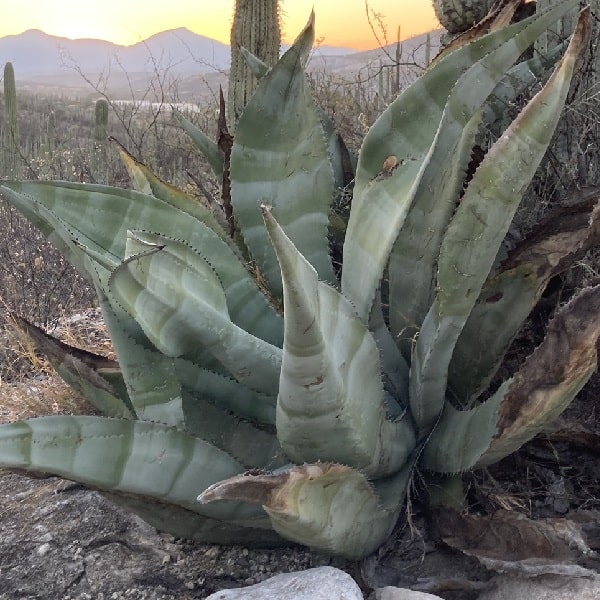
Agave marmorata is an unusual, mid-sized species generally non-suckering with large, broad leaves. It is named “marmorata” (marbled) for the greyish marble-like hue and transverse zones that bar sometimes the leaves especially on specimens grown in full sun.
Agave mckelveyana
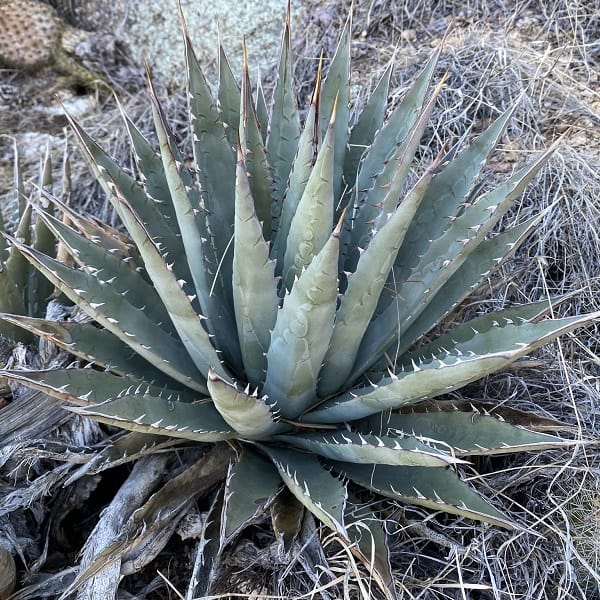
Agave mckelveyana is a small, relatively rare, dwarf species that form a tight rosette similar in size and shape to Agave deserti var. simplex.
Agave mitis
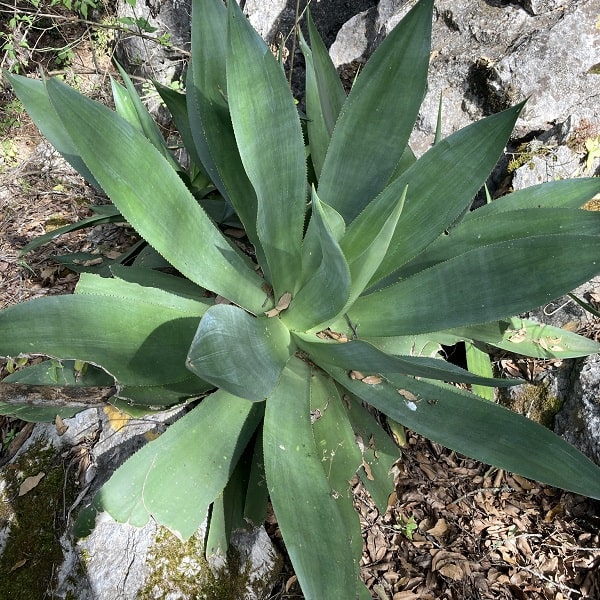
Agave mitis (also known as Agave celsii) is a medium-sized architectural mostly solitary agave. It has small compact rosettes with broad finely denticulate leaves and dense clavate inflorescence.
Varieties of Agave mitis/Agave celsii:
Agave celsii Nova
Agave montana
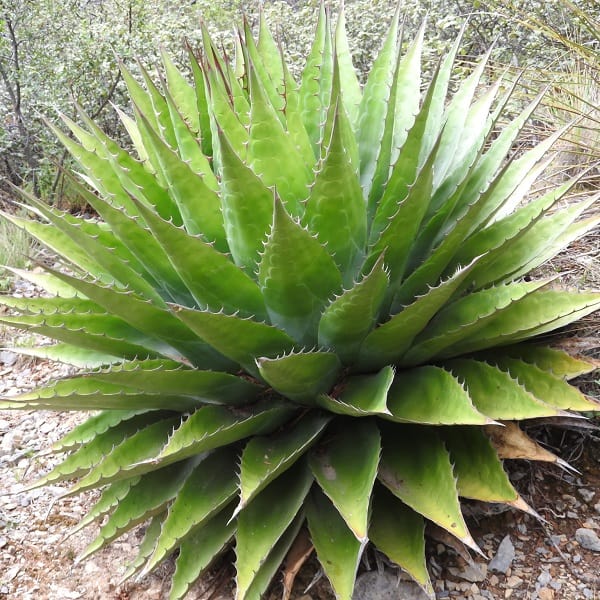
Agave montana, the Mountain Agave, is a particularly handsome Agave that stays solitary (doesn’t offset). It forms a very symmetrical artichoke-like rosette of dark green leaves usually covered with a pale frosting of whitish bloom and carrying on their lower surfaces the distinct impressions of the thorny leaf margins of the previous outer leaf-bud. These thorns and the strong terminal thorn are contrasting reddish-brown.
Like many in its family plant dies after blooming but does not sucker or form offsets so when it gets killed it’s gone, however, the seeds do germinate very easily. As with most agaves, individual clones vary considerably.
Agave ‘Moonshine’
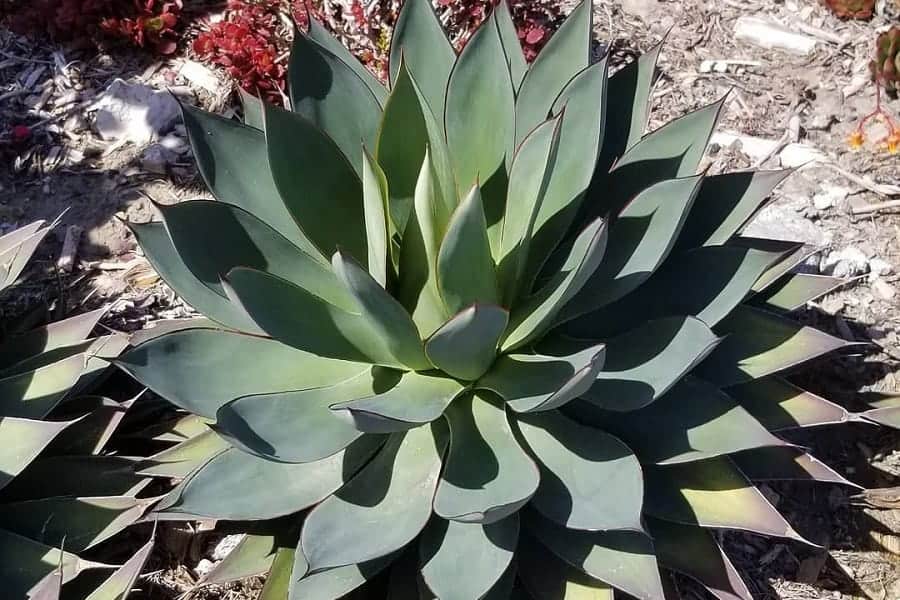
The Agave Moonshine earns its name from its blue-green leaf rosettes. Native to Mexico, this plant tends to have broad and fleshy leaves that can allow for the preservation of water. Some plants also have a red or brown border and spine at the tip of the leaves. The rosette clumps usually grow alone or with other clumps nearby.
Agave murpheyi
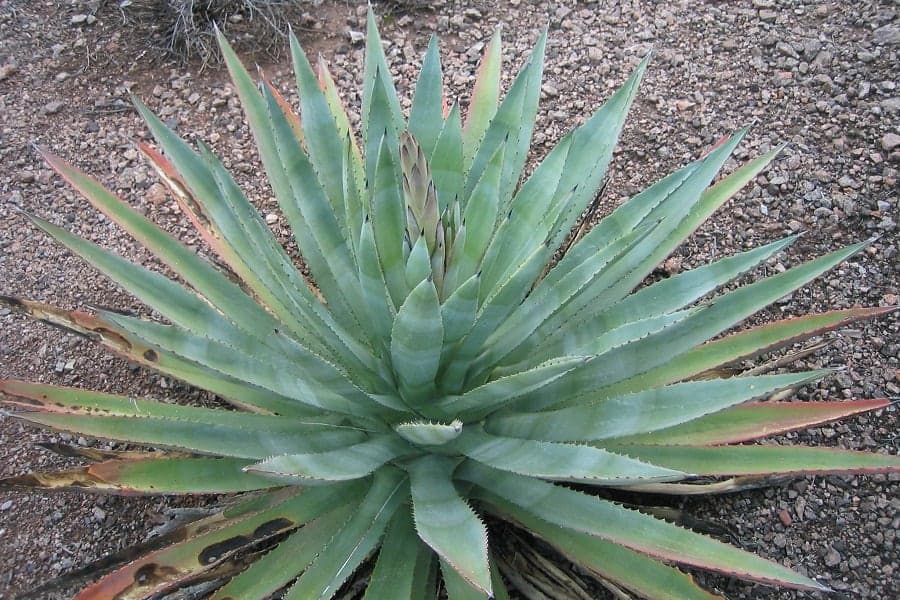
The Murphy Agave (Agave murpheyi) is an easily identifiable succulent with long dark green leaves arranged in rosettes. The leaves are fleshy and tapered at the end. They grow almost upright and the leaves have a horizontal gray and green pattern.
There are barely noticeable small and widely spaced teeth along the edges. The Murphy Agave originated in Mexico and mostly grows in deserts. It is a relatively rare succulent.
Agave obscura
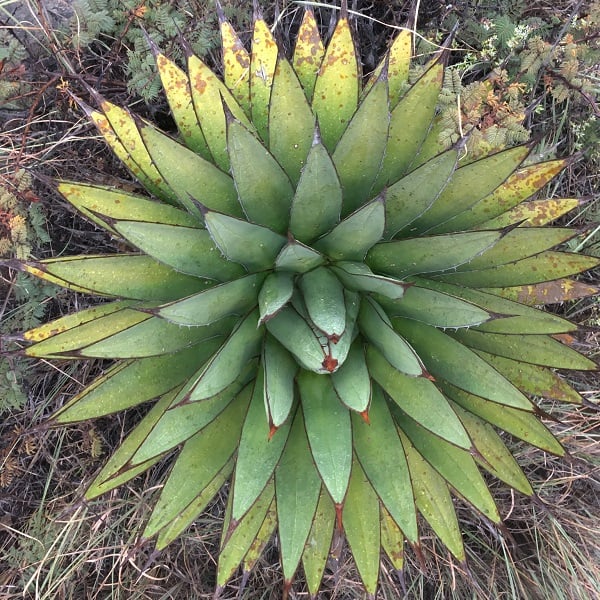
Agave obscura is a medium-sized agave forming a spreading, sometimes suckering rosette to about 1m in diameter, consisting of broad, soft, light green leaves with small, reddish teeth along the margins.
Agave ovatifolia
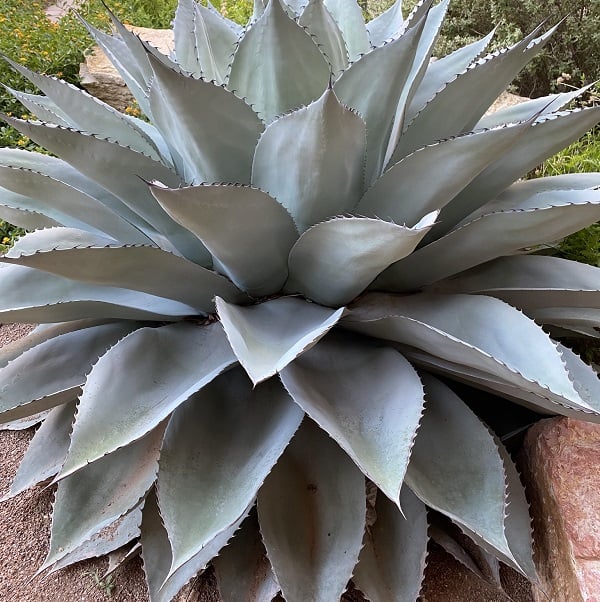
Agave ovatifolia is a compact generally solitary, non-offsetting species that rarely produces an offset or two. Leaves are distinctive, 50-55 cm long by 22-28 across, broadly ovate, silvery blue, and distinctively cupped in the upper surface. Leaves have small hooked teeth along their margins and a 2.5 cm long dark grey terminal spine.
Agave ovatifolia is commonly called Whale’s Tongue Agave because the leaves resemble the tongue of a whale. The flowers are pale yellow-green, borne on a towering stalk at the end of its long, beautiful life. It is one of the most beautiful century plants.
Agave pachycentra
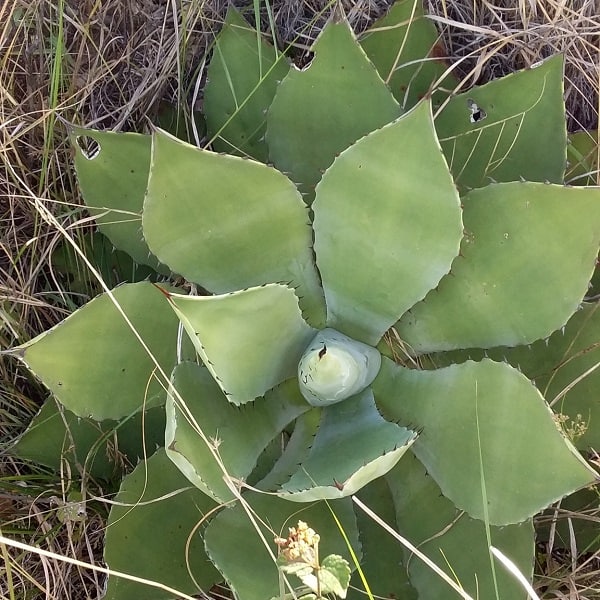
Agave pachycentra is a magnificent, large agave with broad light green leaves. It is highly variable in leaf size, form, armature, and coloring.
Agave palmeri
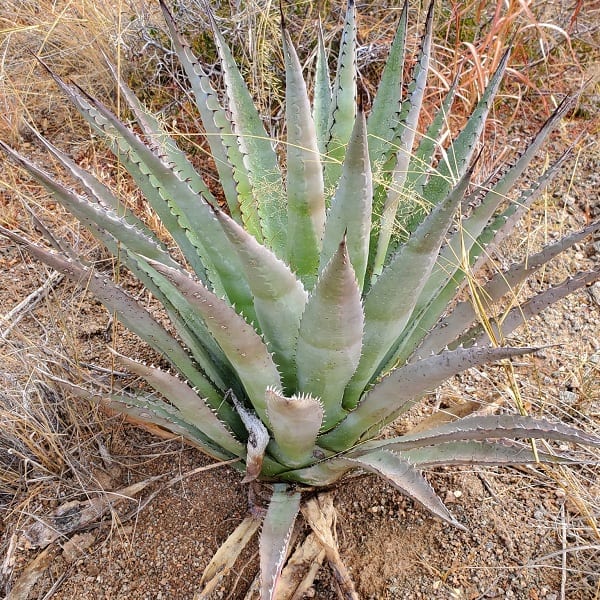
Agave palmeri is a compact agave with blue-green leaves. It is closely related to Agave schrevei, Agave chrysantha, Agave applanata and Agave murphevi.
Agave parrasana
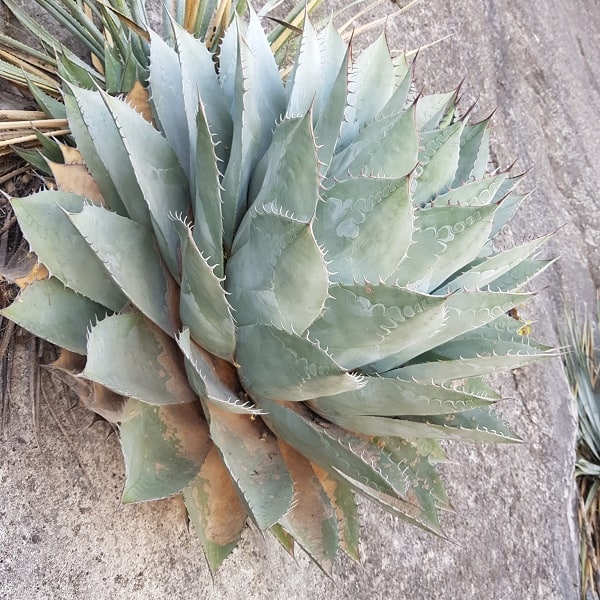
Agave parrasana (Cabbage Head Agave) is a compact, chunky, small-sized agave related and similar to Agave parryi. It has very short broad leaves that form into a tight, symmetrical, spherical rosette, shaped like a ‘globe artichoke’ up to about 60 cm tall by about the same diameter – young plants more upright but with age widen out.
The surface of the leaves displays deep bud prints formed by the teeth of the leaves. It produces few or no offsets but can form small mounds in the pot or landscape. Due to the slow growth rate, these beauties take a while to develop into mature specimens with the classic artichoke form.
When this species produces flowers they are red in bud and open to yellow with red highlights in panicles on a tall stalk to 4.5-6 meters. Like most Agave species, this plant is monocarpic, meaning that it will only bloom and bear fruit once during its life before dying.
Agave parryi
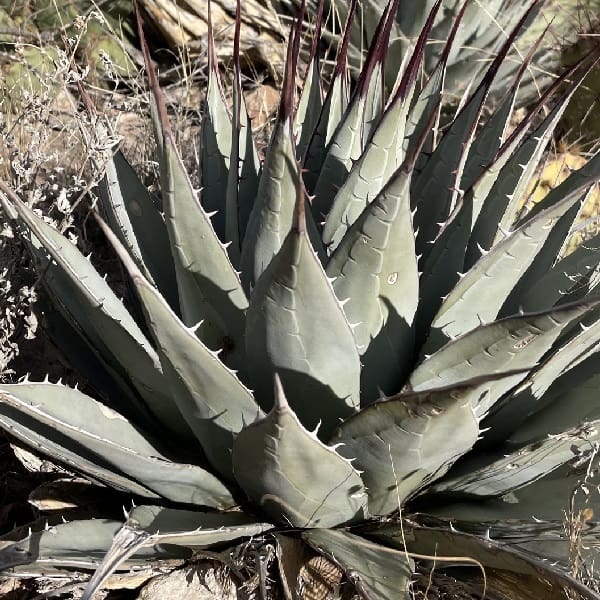
Agave parryi (syn: Agave patonii), also known as Parry’s agave or mescal agave, is a slow-growing, compact, small to medium-sized agave with grey-green leaves with a dark tan or black terminal spine and with very ornamental imprints of previous leaves on the back.
After approximately 25 years plant sends up a 4 meters tall flowering stalk with bright yellow blooms, facing skyward, in large, flattened, terminal clusters; after blooming, it dies, as all leaf and root resources are put into the stalk, flowers, and seeds. New plants already formed on the root system take over. It is very variable and all varieties form beautiful, tight rosettes and are one of the more ornamental species.
Agave parviflora
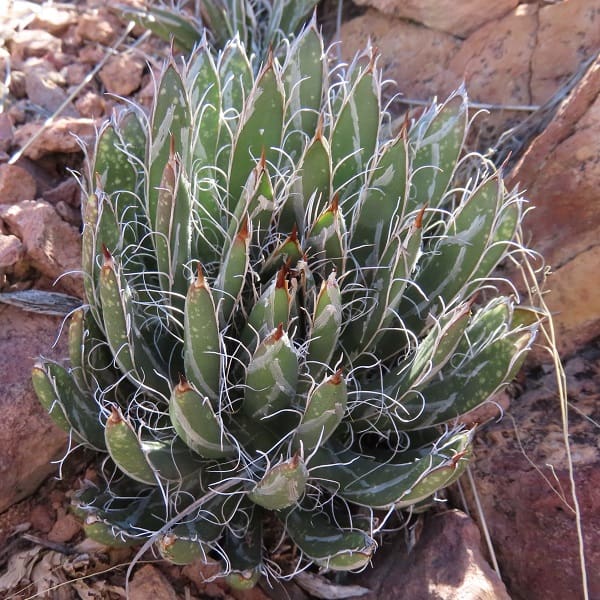
Agave parviflora is one of the smallest species of Agave composed of a small lovely, symmetrical rosette, 10 to 25 cm high, 15 to 20 cm broad and single or sparsely suckering. They live only 15 years or so, but generally produce offsets freely in cultivation.
Agave peacockii
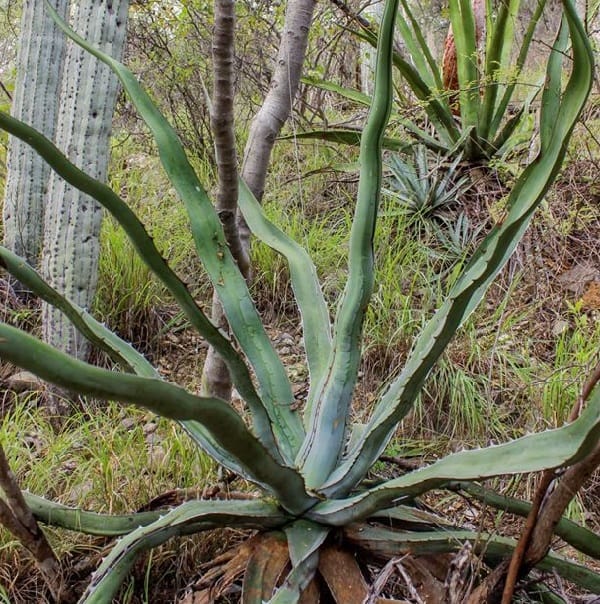
Agave peacockii is a solitary or slowly clumping succulent rosette that will grow to a height of 90-100 cm.
Agave pelona
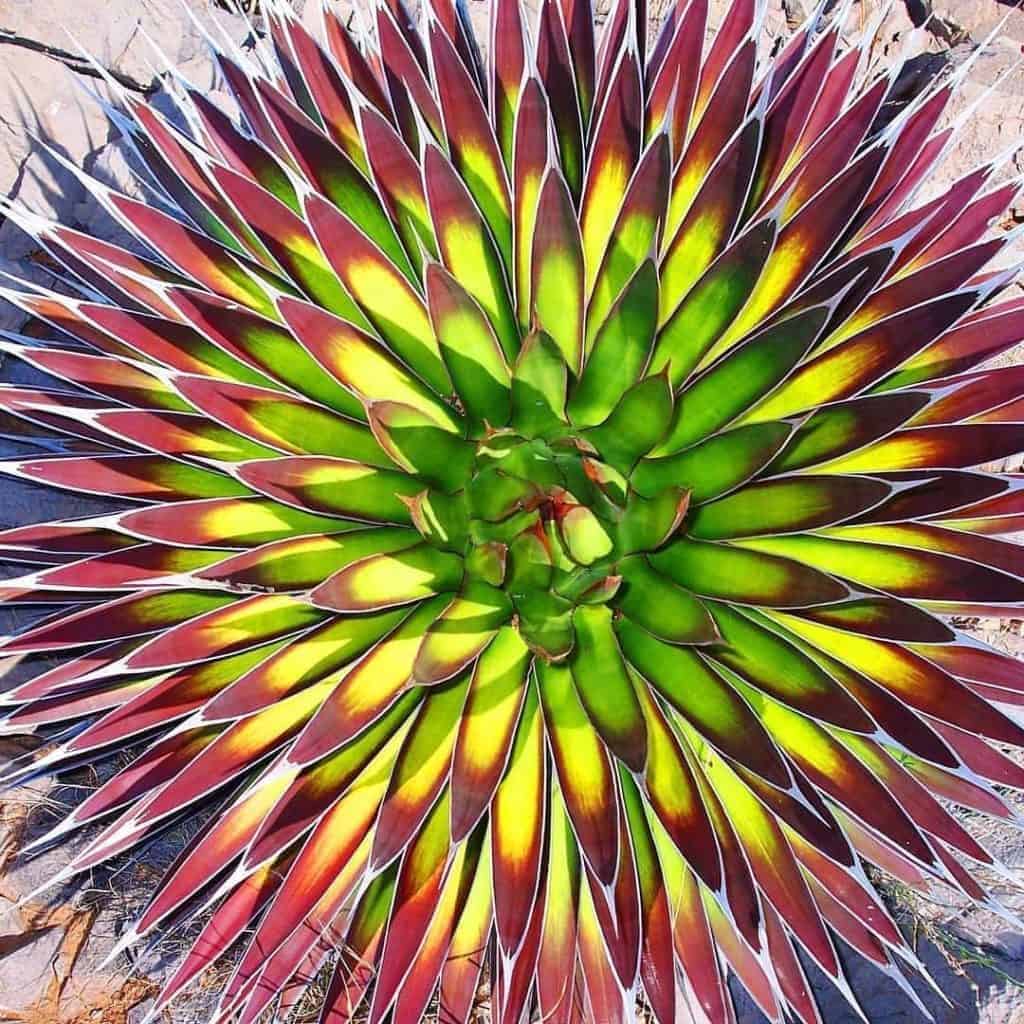
Agave pelona, commonly called the Mescal Pelon or Mexican Agave, is an agave that is native to Mexico. This plant is highly attractive, growing as a cluster of leaves in the shape of a rosette that can reach a height of up to 3 feet.
Agave pendula
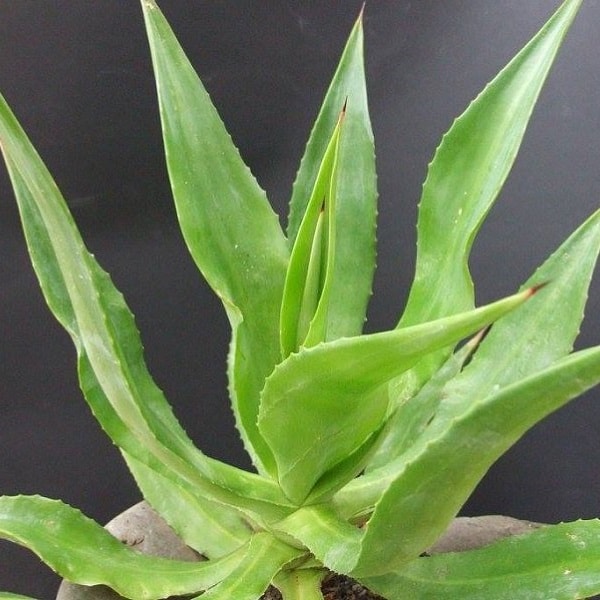
Agave pendula is native to Mexico and is a perennial succulent. It has rosettes with large, fleshy and sharp-edged leaves that are usually light to dark green in color.
Agave potatorum
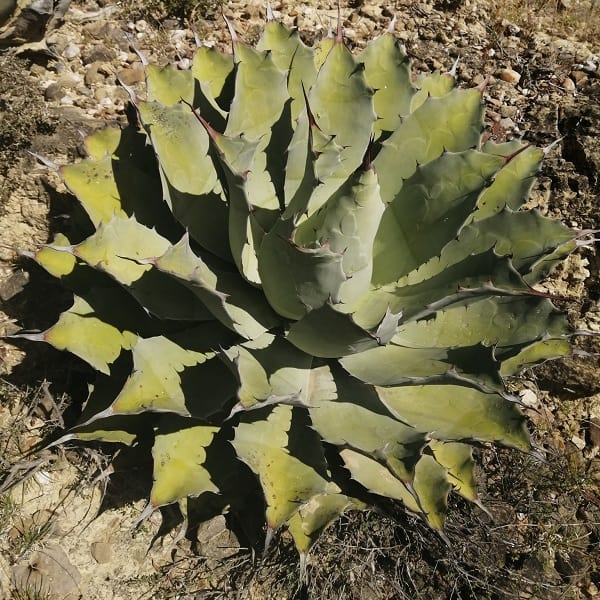
Agave potatorum is a small agave, growing solitary or slowly clumping, that forms a compact to open symmetrical succulent rosette. It is a very polymorphic species with a large range of variability, including various agave varieties, from which many cultivated varieties have been derived.
Rosettes may be anywhere between 10 and 90 cm in diameter when fully grown-up. Leaves may be few or many, variable in color from green to yellowish-green to nearly white glaucous grey or bluish. Generally, they are ovate or short lanceolate, but very variable.
Agave pumila
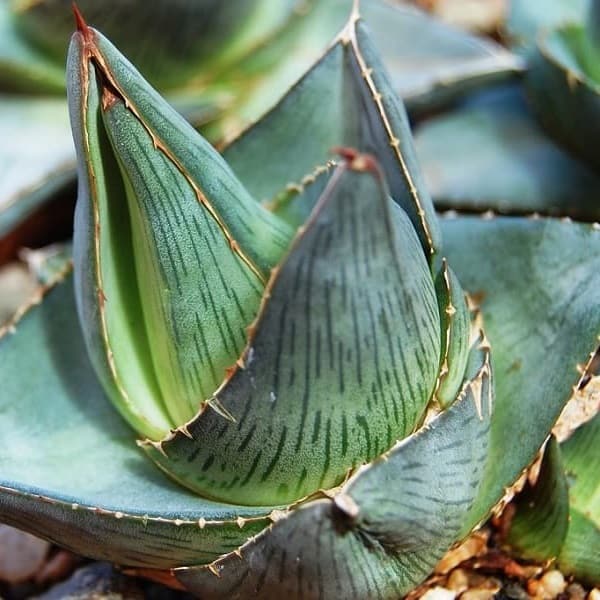
The Agave pumila has a very slow growth rate. Initially, it grows with small rosettes that then go on to have 4 inches in their diameter. Once it matures, however, the leaves become extremely broad and thick and can become as long as 18 inches.
Agave pygmaea ‘Dragon Toes’
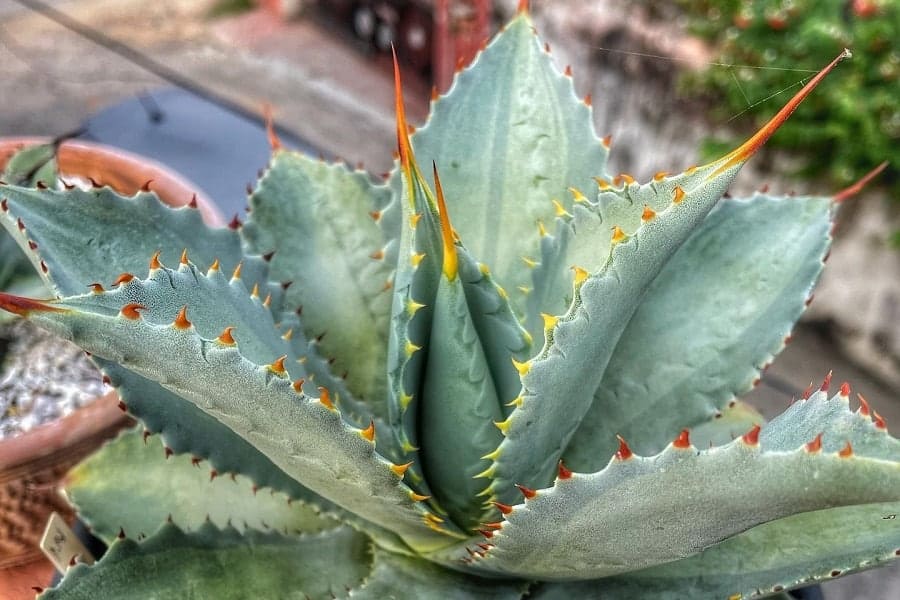
Agave pygmaea Dragon Toes is a dwarf succulent that only grows up to 12 inches tall. The leaves are thick and broad and taper off towards the end. The tips of the leaves are red whereas the rest of the succulent is bluish-green.
Agave ‘Royal Spine’
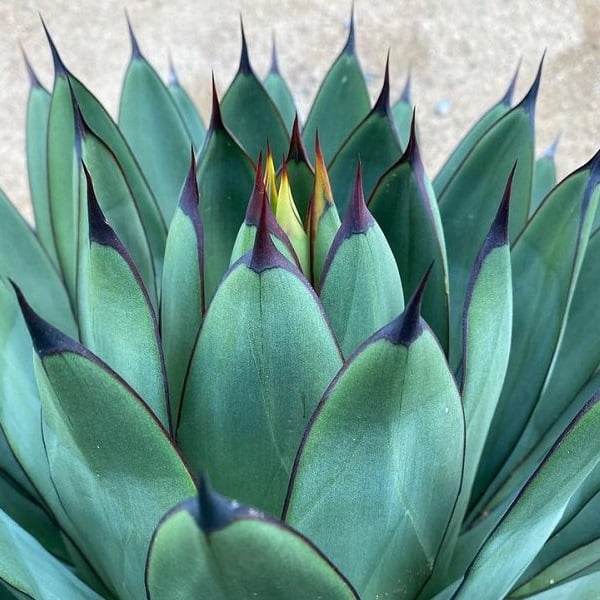
Agave Royal Spine is a succulent that is native to Mexico. This plant tends to grow in compact rosettes that are all symmetrical in shape. These rosettes are nearly 18 inches long.
The leaves of these rosettes are pale green or grey-green in color with even spines at the edges. The borders are also brown which extends to the tip of each leaf.
Agave rzedowskiana
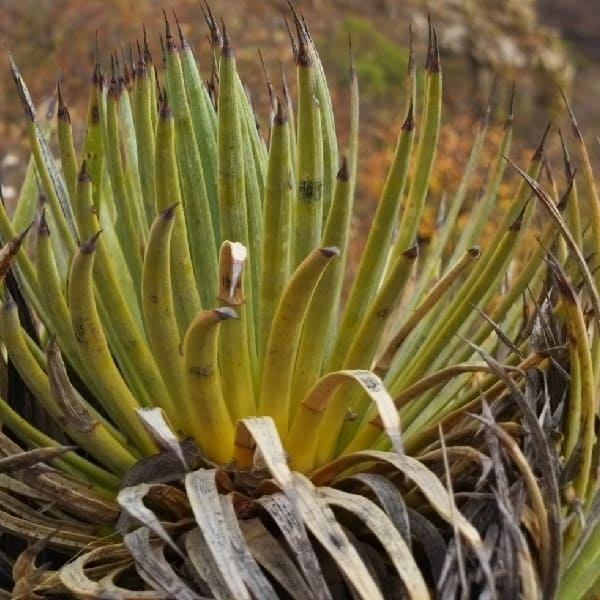
Agave rzedowskiana is a unique compact Agave that can reach diameters of 45 cm with a height of around 40 cm, a rather roundly shaped plant. The leaves are grayish-green and single plants could have up to 260 of them! The width of those leaves reaches a maximum of only 2 cm. The size of the flowers is about 2.5 cm and the fruit reaches a length of 1.3 cm with a diameter of approximately 1 cm.
Agave salmiana
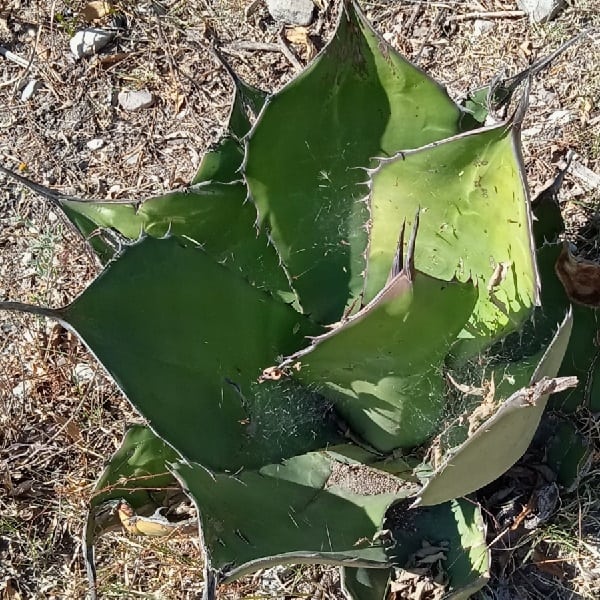
Agave salmiana has green leaves with long-acuminate sigmoid apices and large peduncular bracts subtending broad, pyramidal, large panicles.
Agave sebastiana
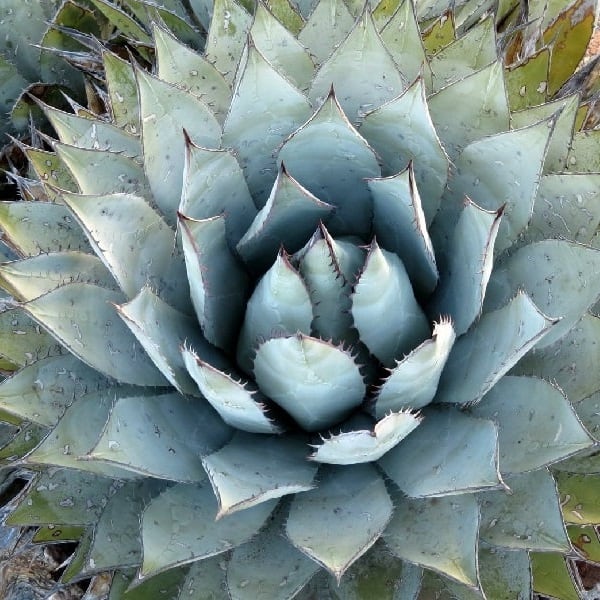
Agave sebastiana is an American succulent plant also known as ‘silver lining’. It grows thick, pale green leaves arranged in rosettes. The leaves are triangular and have reddish-brown teeth along the edges.
Agave seemanniana
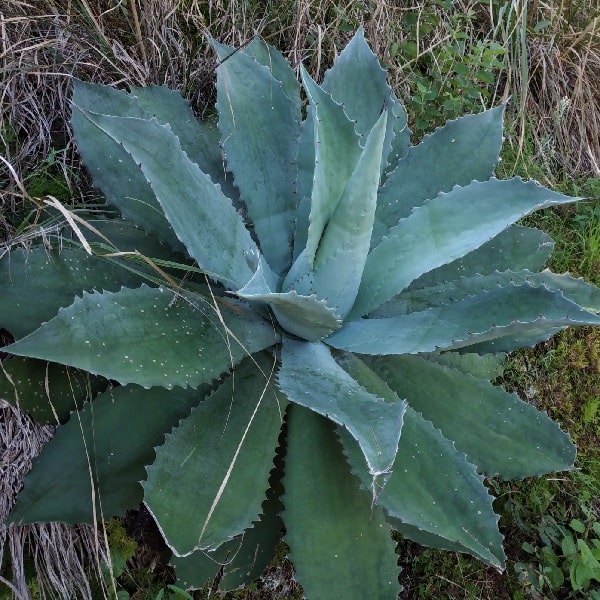
Agave seemanniana is a solitary, non-suckering medium-sized agave generally recognizable in its area by its small compact rosettes with broad plane glaucous leaves, markedly narrowed at the base.
Agave shawii
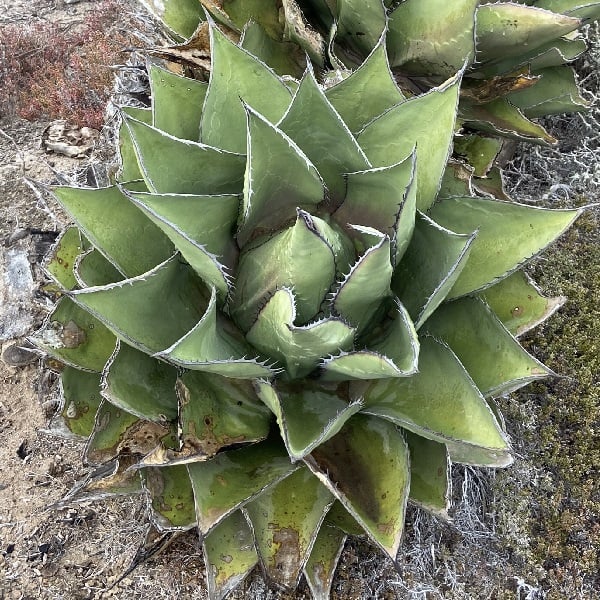
Agave sisalana
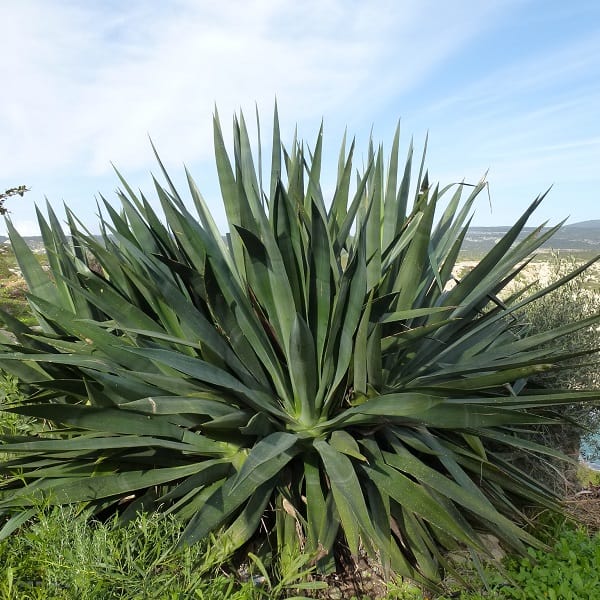
The Sisal, Agave sisalana, is a monocarpic, perennial, short-stemmed, or stemless succulent herb with dark green leaves in rosettes and inflorescence in panicles. It is easily recognizable by its unarmed mature leaves ending with a short dark brown terminal spine.
The term sisal may refer either to the plant’s common name or the fiber, depending on the context. It is sometimes referred to as “sisal hemp” because for centuries hemp was a major source for fiber, and other fiber sources were named after it.
Agave Snow Glow
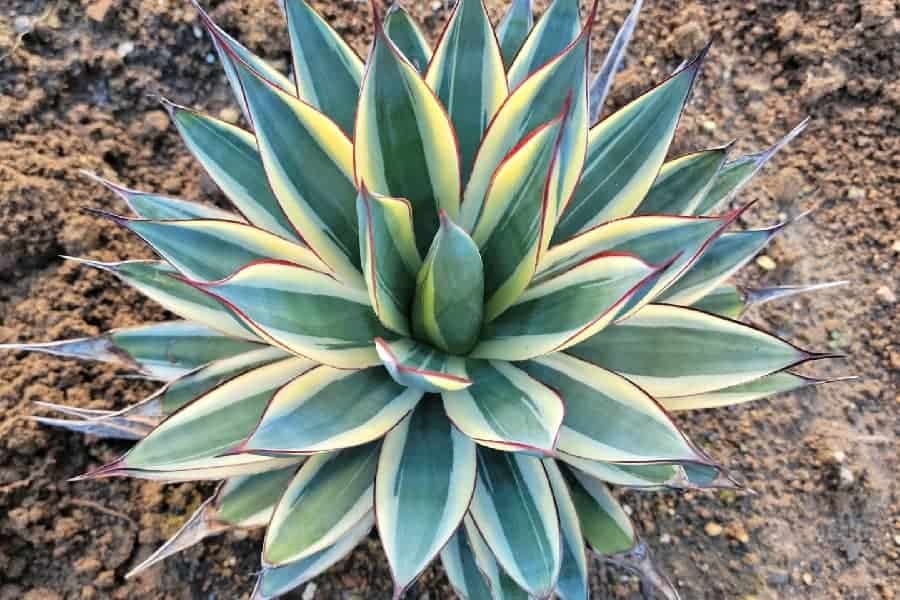
Originating in Mexico, this evergreen Agave Snow Glow plant has thick and long leaves that grow in the shape of a rosette, with each leaf growing up to 18 inches tall.
The outermost borders are brownish-red in color while the inner border is cream or white, surrounding the dark green centers. This plant tends to grow pretty slowly, earning the nickname of “century plant”.
Agave sobria
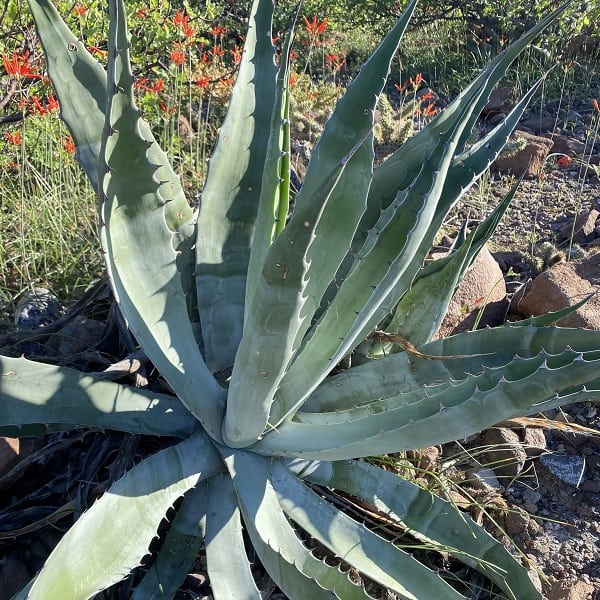
Agave sobria is a small to medium stemless agave that occasionally from a short stem.
Agave striata
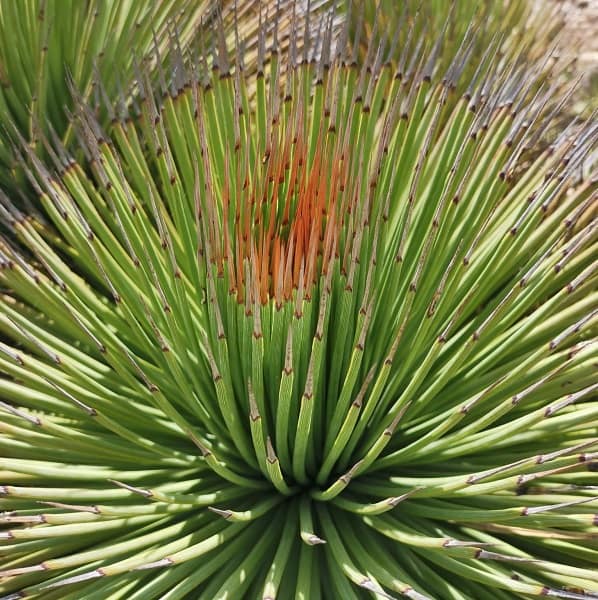
Agave striata is a dense, suckering rosette succulent with unique spiny pencil-like foliage, with nice spherical growth that branches profusely from the base. It is very similar to Agave stricta and can be easily confused with a Yucca.
Agave stricta
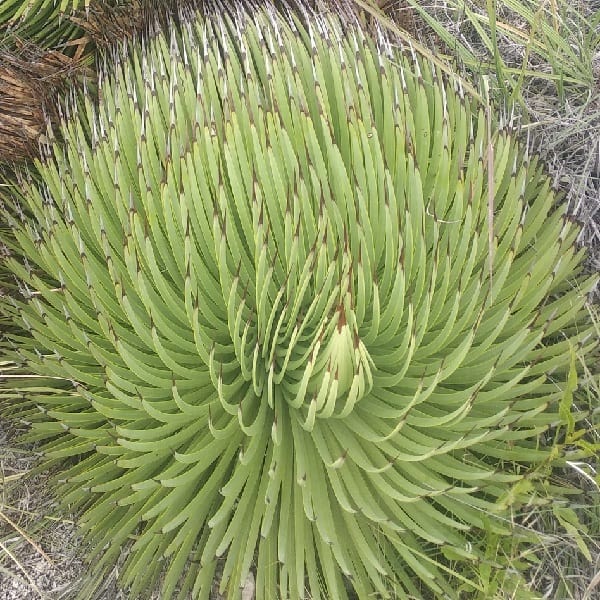
Agave stricta is a small species, forming large balls of skewer-like leaves and looking like a very nasty porcupine. This species has the tightest spherical shape of any agave and will form offshoots to create a colony of rosettes. Each rosette grows in a slightly different direction.
Varieties of Agave stricta:
Agave stricta Nana
Agave tequilana
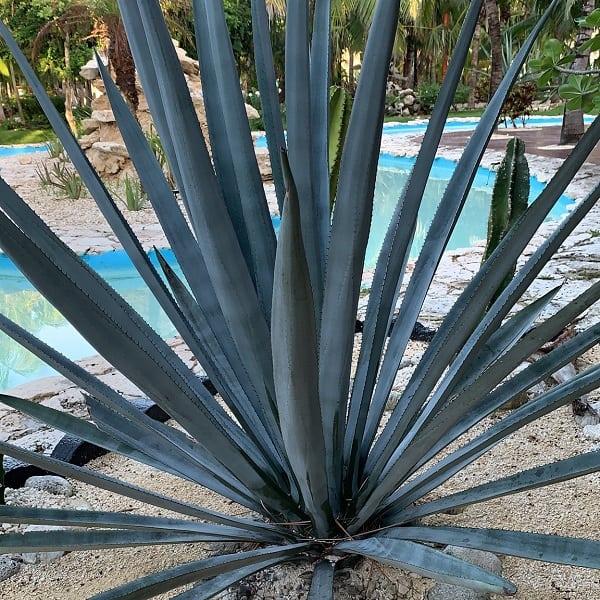
The Agave tequilana is a medium-sized species that forms a spreading succulent rosette with rather thin, rigid blue-green leaves. It suckers from the base and can grow up to 2–4 meters in diameter.
This species is an important economic product of Jalisco, Mexico, due to its role as the base ingredient of tequila, a popular distilled spirit. The high production of sugars, mostly in the form of fructose, in the core of the plant, is its most important characteristic, making it suitable for the preparation of alcoholic beverages.
Varieties of Agave tequilana:
Weber Blue Agave (Agave tequilana Weber var. Azul)
Agave titanota
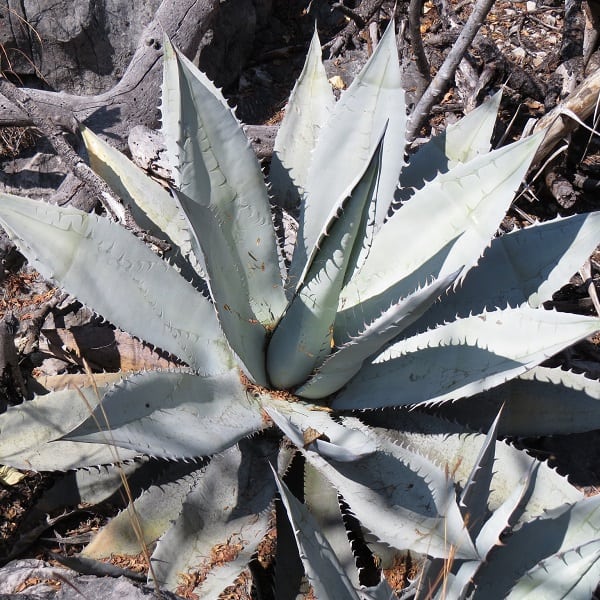
Agave titanota is a medium-sized agave that is extremely robust looking and forms a mostly solitary rosette with a wide, open crown of a few leaves, up to 75 cm in diameter.
There are two different-looking forms of this plant, the typical Agave titanota defined by Gentry with ghostly white colored leaves gradually blend in habitat into the squatter round, greener form described by Felipe Otero (frequently sold as Agave Felipe Otero FO-076), but some blue plants are found isolated at the edge of the range of the green populations, with no green plants around.
Varieties of Agave titanota:
Agave titanota White Ice
Agave toumeyana
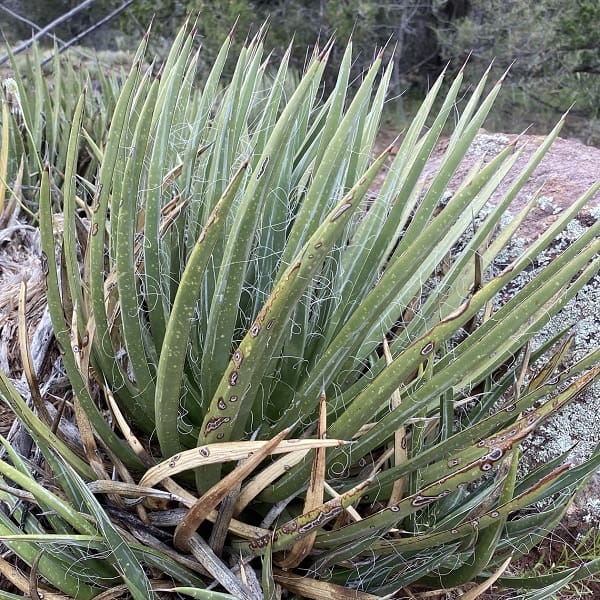
Agave toumeyana has small rosettes, up to 20 cm in diameter, 25 cm tall, each with 100–200 leaves at maturity. Individual rosettes are small and compact, but plants sucker readily form large clumps.
Agave triangularis
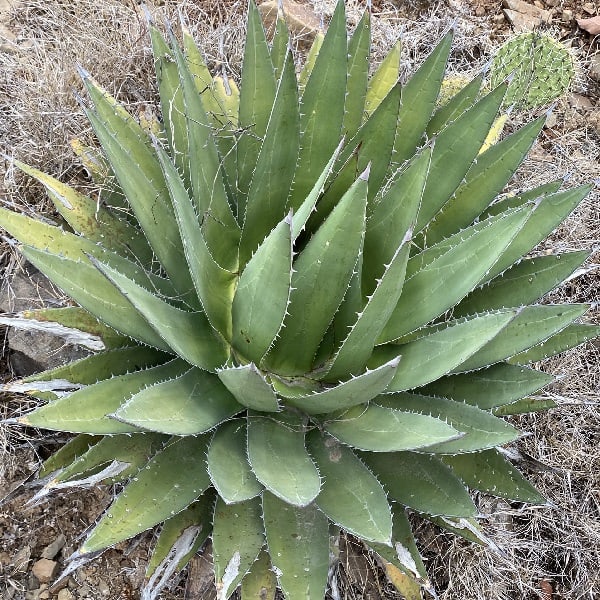
Agave triangularis is a slow-growing, short-stemmed, widely surculose, seldom flowering, rigid rosettes, forming open clones; When this agave matures, its leaves are stout, and clustered together, creating a starburst effect.
Agave univittata
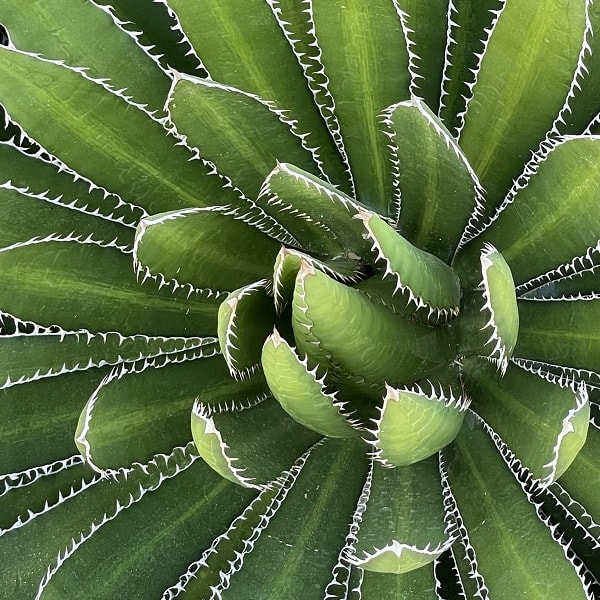
Agave univittata is stemless, usually suckering agave that forms dense clumps to 60 cm tall by 1.5 m wide composed of very regular leaf rosettes of a light green to yellow-green, with or without pale mid-stripe.
Leaves wide at the base, long tapering grey-green, slightly hollow on the upper side with or without pale mid-stripe, marginal spines stout, curved downwards, terminal spine very sharp, 25 mm long. It is extremely variable and has many varieties and forms.
Agave utahensis
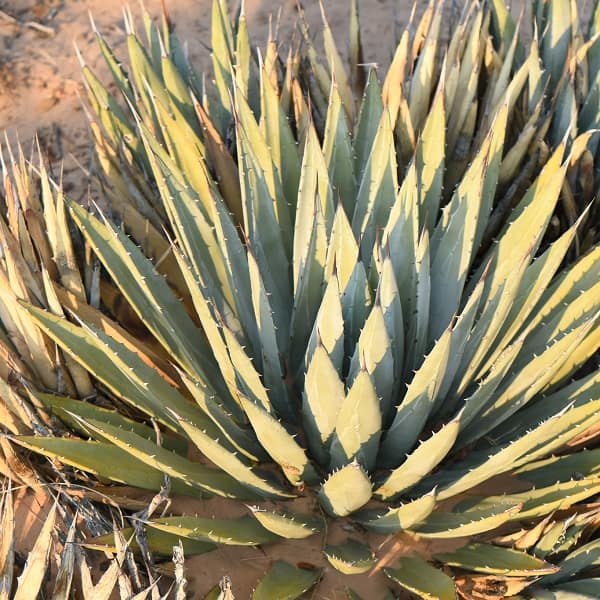
Agave utahensis (Grand Canyon century plant) is generally considered one of the most cold-tolerant century plants because it grows farther north than the rest of the species in the genus, in North Arizona and southern Utah. The rosettes, which are about a foot (30 cm) tall and slightly wider, are made of many, narrow leaves with teeth along the margins.
Agave victoriae-reginae
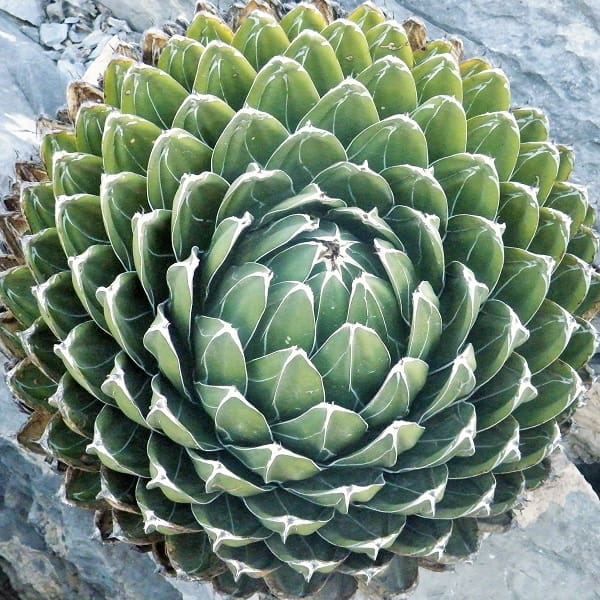
Agave victoriae-reginae is a very slow-growing but tough and beautiful Agave. It is considered to be one of the most beautiful and desirable species. It is extremely variable with the very open black-edged form sporting a distinct name (King Ferdinand’s agave, Agave ferdinandi-regis) and several forms that are the more common white-edged form.
Several cultivars have been named with different patterns of white leaf markings or no white markings (var. viridis) or white or yellow variegation.
Agave vilmoriniana
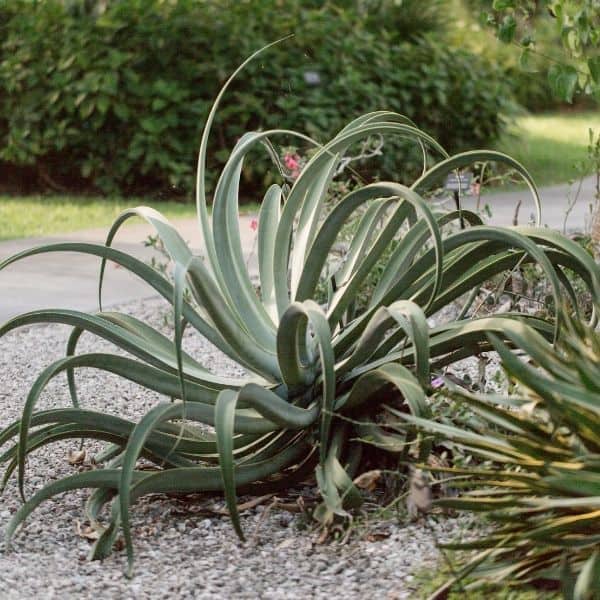
Agave vilmoriniana, sometimes misspelled vilmoriana, and popularly known as Octopus agave, is a medium to large accent plant with graceful narrow, arching and twisting leaves that sprawl quickly and grotesquely, making the plants resemble huge spiders. It is solitary (does not form pups).
Agave vizcainoensis
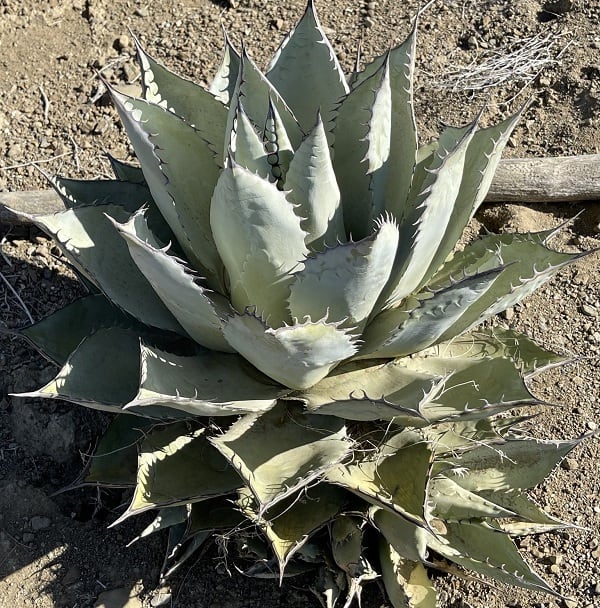
Agave vizcainoensis is a medium-sized Agave with very variable leaf coloring.
Agave weberi
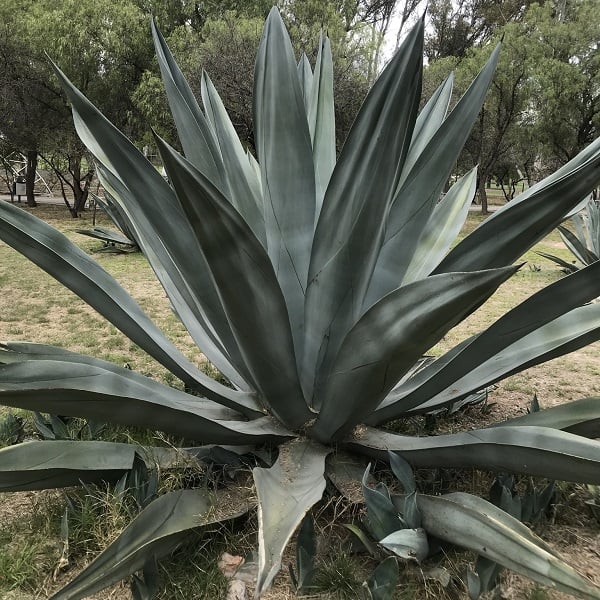
Agave weberi (also Agave neglecta) is a solitary or branching medium-sized agave with thick pointed, almost spineless leaves, up to1,8 m tall and 3 m wide. It has a moderate growth rate, produces offset plantlets at the base.
Agave wocomahi
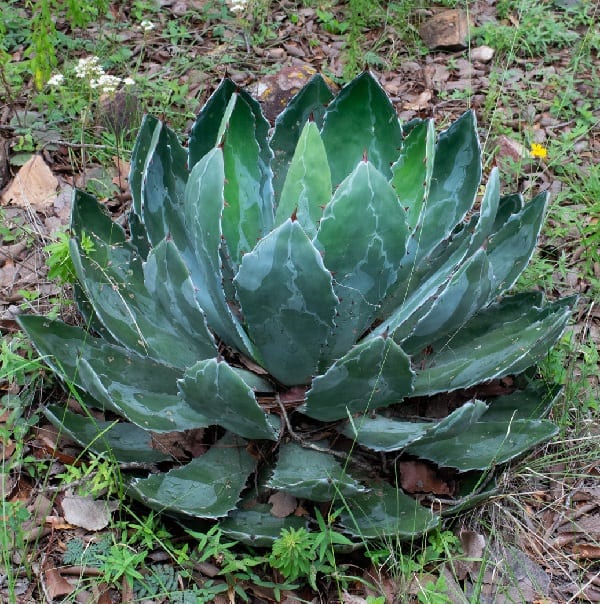
Agave wocomahi is a handsome, moderate-sized to large glaucous green agave. The plant does not offset and only reproduces by seed.
Agave xylonacantha
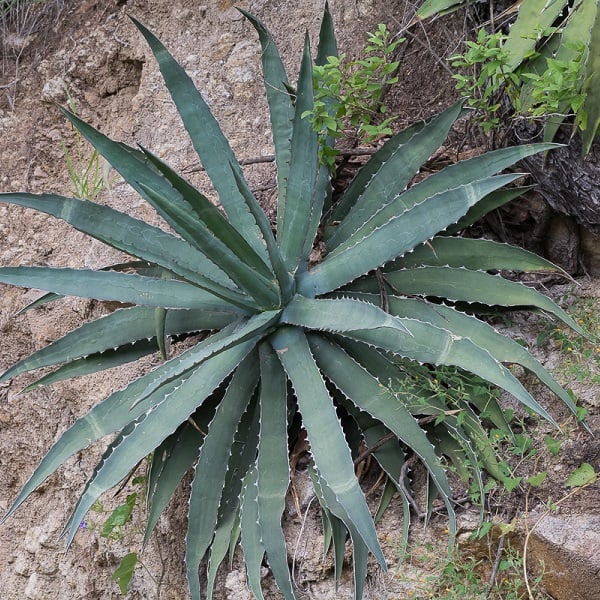
The Saw Leaf Agave (Agave xylonacantha) generally produces a single rosette but some plants will produce offsets with time. Each rosette grows up to 30 cm tall and 120 cm wide and has an open, free form and produces relatively few leaves compared to other agaves.
Agave zebra
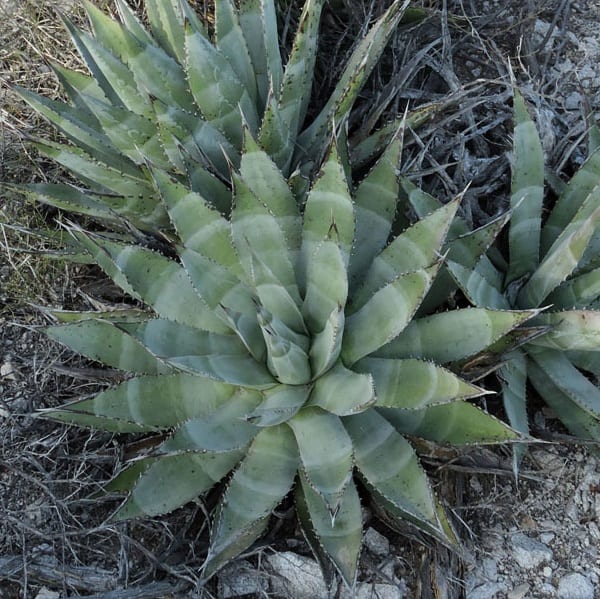
Agave zebra is a fast-growing medium size agave to 90-120 cm tall and in diameter. Its leaves are long recurved grey, characteristically “V” shaped in cross-section with prominent teeth along the margin and beautifully cross-barred with broad bands of silvery green. The bands become more pronounced in full sun.
About Agave Plants
This plant or genus of plants is a succulent that has long fleshy leaves that tend to grow in the shape of a rosette. Flowers also bloom on this plant but only once in several years.
There are several types of Agave that display slightly differing characteristics. The plants also have extremely short and round stems that are barely visible.
These plants produce a sap while the leaves have spiked edges for protection. Further, they tend to produce pups that you can make good use of for propagation.
Usually, these plants grow in the months of spring to early fall. They comprise several edible parts such as flowers, stalks, leaves as well as the sap, which is commonly used in the production of certain alcoholic beverages.
Yucca vs Agave
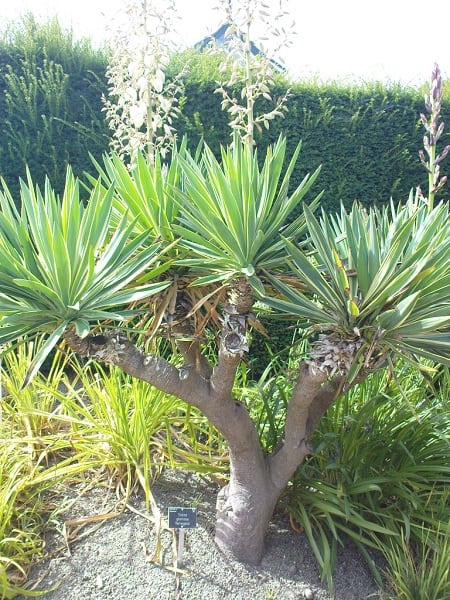
The yucca actually belong to the agave family. Many different plants belong to this subfamily, which are usually persistent or perennial and usually cannot tolerate frost. They are native to many parts of the world.
Like all agave plants, the yucca belongs to the asparagus family. The famous vegetable asparagus or agave, whose juice can be used to make tequila, also belongs to this family. The fibers of some types of yucca and agave are processed. Other species serve as ornamental plants in gardens or parks and also as house plants.
Most species of the yucca, including various identification agave plant types, come from Central America, specifically Mexico and the border area of the USA. Many species grow in dry areas, but some also in mountainous areas.
As a result, they have different conditions for their care. What all species have in common is that they prefer it dry and do not tolerate much rain or waterlogging.
Sometimes the specimens of the species Yucca gloriosa, known as the Spanish dagger, are confused with the agaves. However, their leaves, which are also arranged in the form of a rosette, are significantly thinner and contain less water. This may also be the main reason why these plants are very hardy when compared to many agave species.
The Spanish dagger flowers in a suitable location every year and tends to develop a woody trunk base than agaves. This plant can be an exotic-looking alternative if the similar-looking agaves cannot be overwintered outdoors due to the local temperatures.
How to Care for Agave Plants
Agave plants are easy to care for but still have specific care conditions that can allow them to thrive. You can go through these below.
Light
These plants tend to prefer bright and direct sunlight for several hours every day. Thus, make sure you keep them in a suitable location inside your house if you are growing them in a pot, such as on a balcony or a windowsill.
You can also provide them with a bit of shade during the day as too much light could end up burning them.
Watering
These plants do not require frequent watering. In fact, you should only water this plant once the soil dries out fully and if the climate is quite dry as well.
You can gradually decrease the amount of watering, starting out with watering once in four days after propagation, once a week after a month and even less often after that.
You can also make suitable adjustments depending on how much rainfall and humidity there is.
Soil
The soil of these plants should be well-draining so that no excess water gets left behind as this could lead to root rot. You should also opt for a mildly acidic to neutral pH.
You can add sand to make the soil more coarse and loose to prevent waterlogging. Make sure you also opt for a pot with a drainage hole to ensure that the excess water seeps out.
Fertilizing
You do not need to add fertilizer to the plant too frequently during the growing season since the plant can derive sufficient nutrients even without it. You can, however, add a balanced and diluted fertilizer about once a year.
Minimal fertilizing will also help retain the slow growth of this plant and prevent flowers from blooming too quickly so that the plant can live for longer.
Climate
Agave plants tend to prefer a hot and dry climate. They tend to grow well in USDA hardiness zones 8-10 although there might be some variations depending on the species.
When they become dormant in winters, you should protect them from frost by shifting them indoors. Controlling the humidity is also a good idea when it comes to the health of these plants.
Pests and Diseases
These plants are usually safe from most kinds of pests and diseases. However, you should watch out for the agave snout weevil that resembles a beetle and can lay its eggs on this plant, causing it to collapse over time.
Apart from this pest, you should care for the plant properly to prevent infections and fungus growth as this could lead to root rot.
Propagating Agave Plants
You can propagate these plants using the following methods.
Pups
For propagation through pups or offsets, you can go through the following steps.
- Remove the pup from the parent plant by gently tugging it out. Make sure you retain the roots of each pup.
- Keep the pup aside in some shade for a few days so that a callus can form.
- Take a small pot and fill it with some soil mix.
- Plant the offset into the soil and keep the pot in a spot that receives a good amount of sunlight. Water it each time the soil becomes dry.
- Once the pup grows a bit, you can repot it or plant it outdoors.
Seeds
You can follow these steps for growing the plant from seeds.
- Figure out the requirements of your respective species.
- Sow the seeds in a pot filled with the soil mix.
- Sprinkle some water in the soil and wrap the pot with some plastic.
- Keep the pot in a warm location with indirect sunlight.
- Once you notice the seedlings forming within a month, take the plastic off.
